Road trips in Türkiye with Halalbooking: Adana - Mardin Route
Our latest road trip route on Halalbooking takes you on a unique journey in Southeastern Anatolia. It starts from Adana, famous for its kebabs, and ends in Mardin, known for its Mesopotamian flavours. The Adana-Mardin route will delight both eyes and taste buds. Prepare to travel back in time through thousands of years of history.
Get Ready to Hit the Road!
Adana Airport is located just 5 km from the centre of Adana. There are several daily flights to the airport from cities such as Istanbul, Ankara, Izmir and Antalya. In addition, there are direct flights to Adana from various cities of Germany.
You can rent a car from the airport and drive to the city centre of Adana, or you can get to the city centre by taking Havaş buses and rent a car from there.
Itinerary

- Adana → stop in Osmaniye → Gaziantep
- Gaziantep → stop in Göbekli Tepe → Sanliurfa
- Sanliurfa → stop in Viransehir → Diyarbakir
- Diyarbakir → stop in Hasankeyf → Mardin
Adana
Adana - the land of kebabs, grilled liver and fermented carrot juice - is the ideal city to start a gastronomic route. You will have the chance to try the most delicious dishes you can ever taste. Also, you will spend unforgettable days in the fifth largest city of Türkiye, which is also known for its hot climate and magnificent views of the Seyhan River, letting you feel the sun on your skin.
Due to its rich history dating back to the Anatolian Principalities period, Adana is also home to numerous historical monuments and artefacts of Islamic heritage.
Here are some examples of the stunning structures you can see on your trip to Adana:
- Originally built as an Armenian church, the Yag Mosque was converted into a mosque by Ramazanoglu Halil Bey in 1501. However, due to the small size of the structure, a second building was built by Halil Bey's son and the capacity of the mosque was increased.
- The Sabancı Central Mosque on the banks of the Seyhan River is a magnificent structure in classical Ottoman style inspired by the Sultan Ahmet Mosque and the Selimiye Mosque.
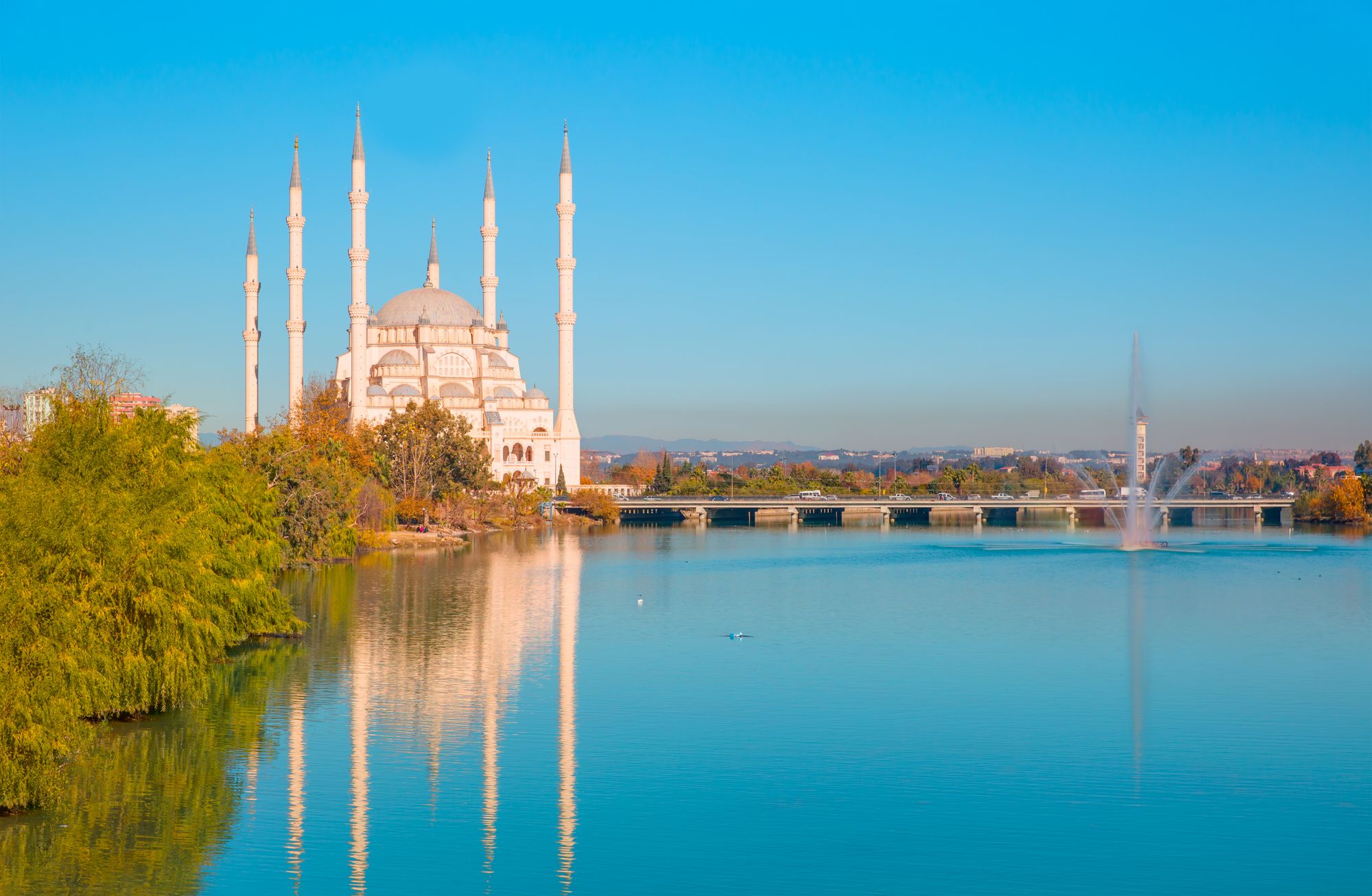
- Built in the 16th century during the rule of the Ramadanid Emirate, the Grand Mosque reflects Seljuk and Mamluk styles. The architecture, particularly the tiles and interior design of the mosque was an inspiration for other mosques built in the same region. It was also considered to be the largest mosque in Adana until the Central Mosque was built.
- Located next to the Grand Mosque, the Ramazanoglu Madrasa was built in 1495 by Halil Bey and served Ottoman emperors such as Sultan Suleiman the Magnificent and Murad IV.
- After visiting the Grand Mosque and madrasa, don’t miss the Great Clock Tower, which is only a 2 minute walk.
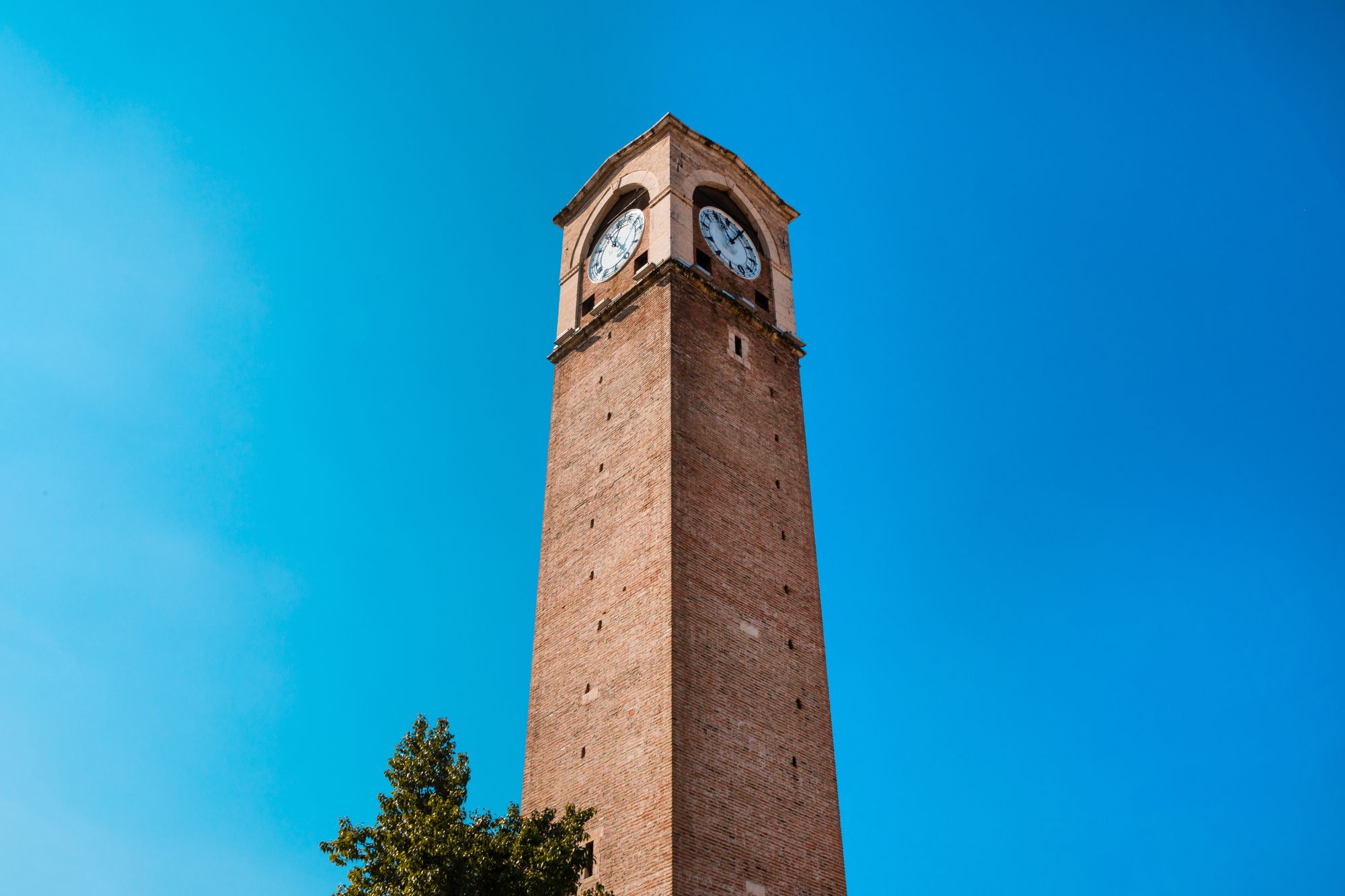
With its natural beauties and amazing parks, Adana offers many open-air spaces to be explored:
- The Central Park opened in 2004 and is located between the Central Mosque and Galleria Shopping Mall. It covers an area of 33 hectares on the banks of Seyhan River and is the biggest park in Türkiye.
- Located in Karaisali district of Adana, Kapikaya Canyon is a great place for hiking, climbing, being alone in nature and taking photos.
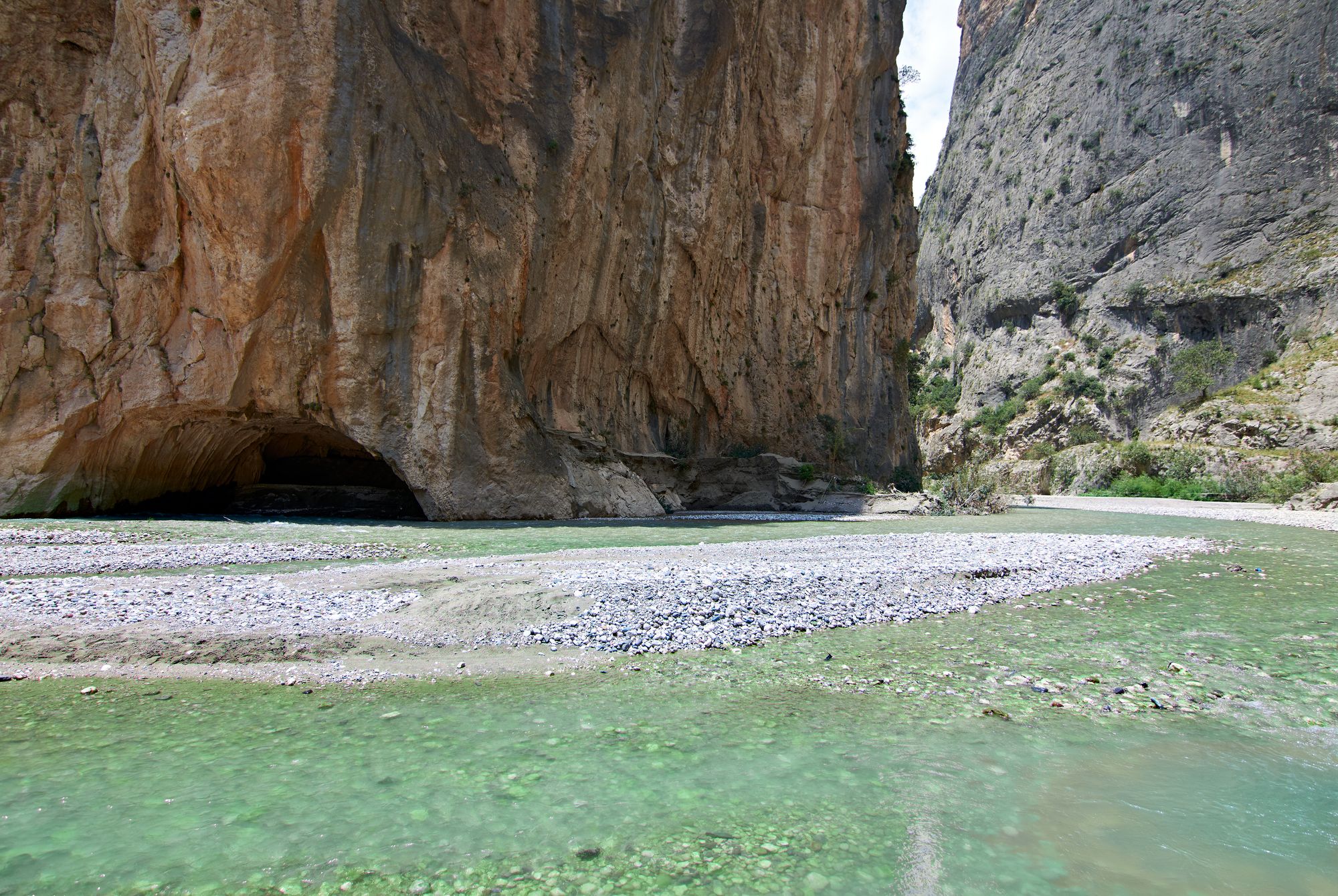
- Located over the Seyhan River, Taskopru (stone bridge) is one of the landmarks of Adana. Built by the Roman Emperor in the fourth century, the bridge connects two sides of Adana and is known to be the oldest bridge in the world.
- Also known to the locals as the Big Bridge or the German Bridge, Varda Bridge was built in partnership between the Ottoman Empire and Germany. The Ottoman Empire built the bridge as part of the Hejaz Railway, and Germany did so in order to access oil resources.
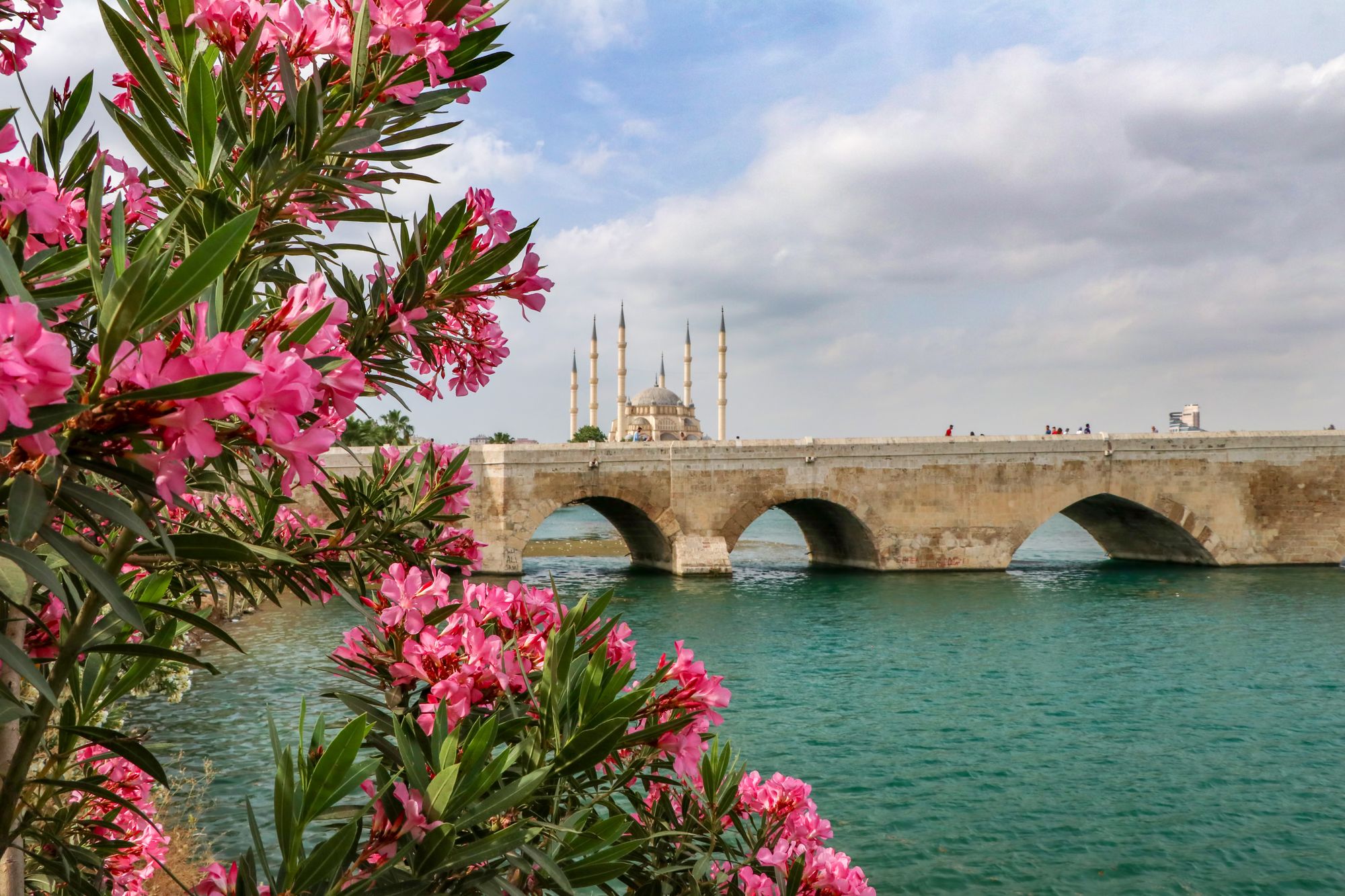
- The Kazancilar Bazaar, home to the historical Great Clock Tower, provides its visitors with an excellent opportunity to shop around and get to know the culture of Adana. You can buy local products, Adana salwar, copper boilers as well as many other souvenirs, and taste the unforgettable flavours of the city.
The most important part of the trip to Adana is undoubtedly the food. At any time of the day, you can taste various dishes unique to the area, from kebabs to pastries. Start your day with a delicious cheese pastry, Adana Boregi, and a cup of tea in one of the pastry shops in different parts of the city. If you want to eat like the local residents, try some grilled liver for breakfast. With its fabulous appetisers, Cigerci Mahmut is among the most popular restaurants. Whether you prefer a luxury restaurant or a kebab counter, the world-famous Adana kebab is a dish to be remembered. Almost all of the restaurants serving grilled liver and kebab in Adana are alcohol-free, providing its halal-conscious visitors the opportunity to enjoy their meals.
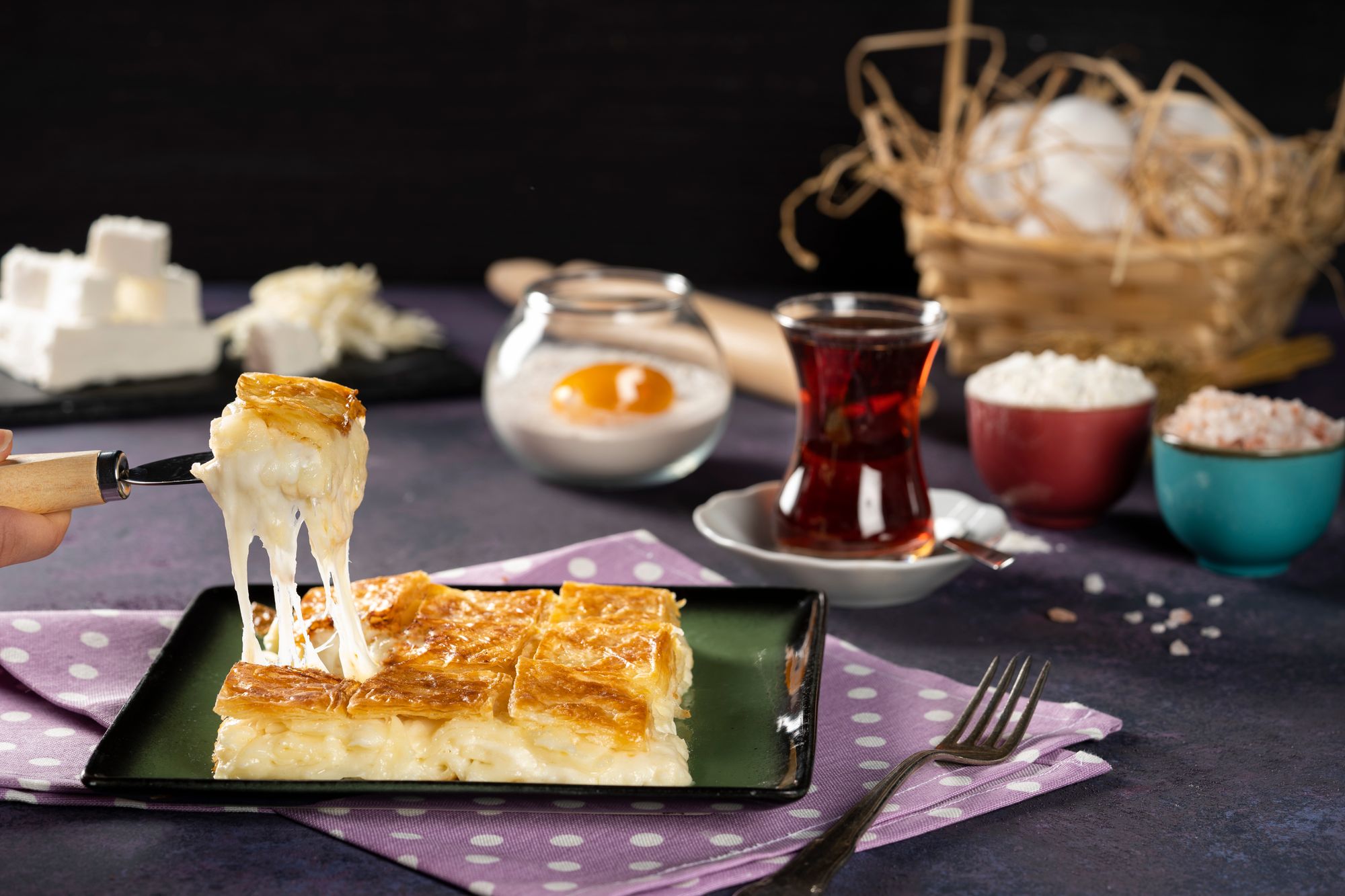
The restaurants Kaburgaci Yasar Usta, Mesut Kebab and the Cik Cik Ali Kebab are some of the kebab restaurants. Try bici bici at Bici Bicici Abuzer Usta for a perfect end to a day. Also try karakus dessert or tas kadayif whilst enjoying Tarsus-style coffee. In the Kazancilar bazaar, you can taste the savoury cezerye of Adana and buy a couple of pastry boxes filled with it to offer your friends when returning home.
Get ready to set off for Gaziantep as you say goodbye to Adana. Drive 98 km on the O-52/E90 Adana-Sanliurfa Highway and after 1 hour and 10 minutes, stop off in Osmaniye.
Relax and have fun with your children at the Osmaniye Fairytale Park located next to the Osmaniye governor's building. Explore miniatures of iconic places from different parts of Türkiye, take photos with models of cartoon characters, sit under the fairy tale tree and listen to a beautiful fairy tale and simply have a great time at the amusement park. After buying souvenirs from the stores on the shopping street, you can have dinner at the Adana Lezzet Sokagi.
After a lovely break in Osmaniye, drive 134 km on the O-52 Highway and you will arrive in Gaziantep in 1 hour 40 minutes.
Gaziantep
The next stop on your journey that will seduce your senses with flavors is Gaziantep. Its historical buildings and striking tastes such as lahmacun and baklava, appeal to both eyes and taste buds. We recommend staying there for at least 2-3 days to fully explore the city and its surroundings.
You can discover deep-rooted history dating back to ancient times and astonishing culture of Gaziantep in the following museums:
- The Museum of Islamic History and Science for the inventions and works of Muslim scientists in the fields of astronomy, medicine, physics, chemistry, maritime and many more. Learn about the discoveries of scientists from Ibn al-Haytham to al-Biruni and Abu Nasri Mansur.
- The Ancient City of Zeugma, located on the slope of a hill 10 km from the district of Nizip. The ‘Gypsy girl' mosaic is attracting worldwide attention, as are the mosaics extracted from Zeugma, which are exhibited at the Zeugma Mosaic Museum.
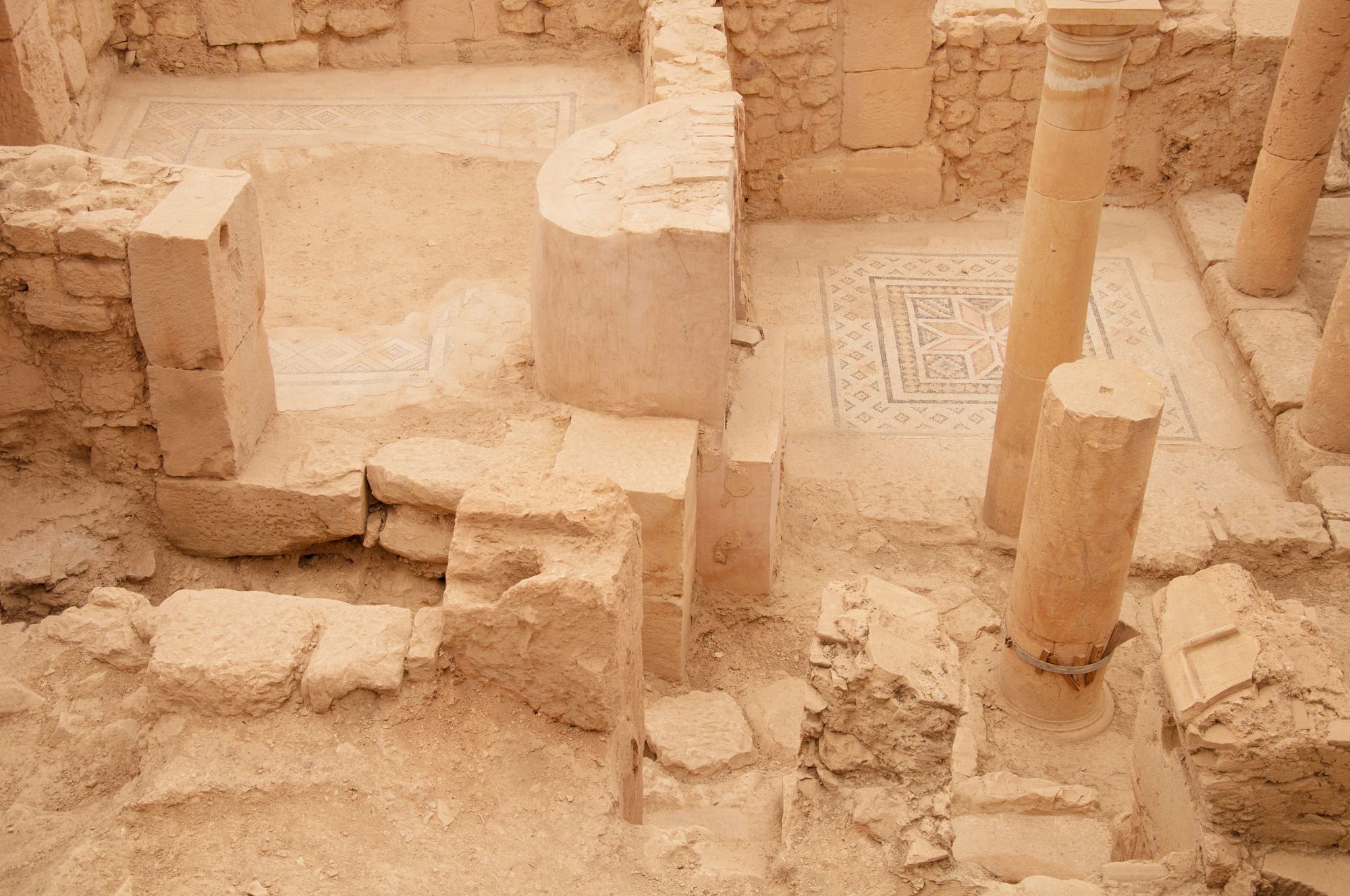
- At the Gaziantep Hamam Museum, built by Lala Mustafa Pasha, you will discover the beautiful baths and details of Türkiye's traditional bathing culture, often referred to in folk songs, as well as wax models depicting this tradition.
- Located in a historic Antep mansion, the Gaziantep Games and Toys Museum houses hundreds of toys from the 17th century to the present day. There you will find unique handmade toys, fairy-tale themes and items that remind you of your childhood.
The following historic castles and mansions are also worth a visit:
- Located on a hill in the city centre, the Gaziantep Castle has been referred to in Evliya Celebi's Book of Travels. It is believed that it was originally built as a watchtower in the Roman Empire. This magnificent castle with 12 towers and stone walls has taken its current form with additional structures built in the Byzantine period.
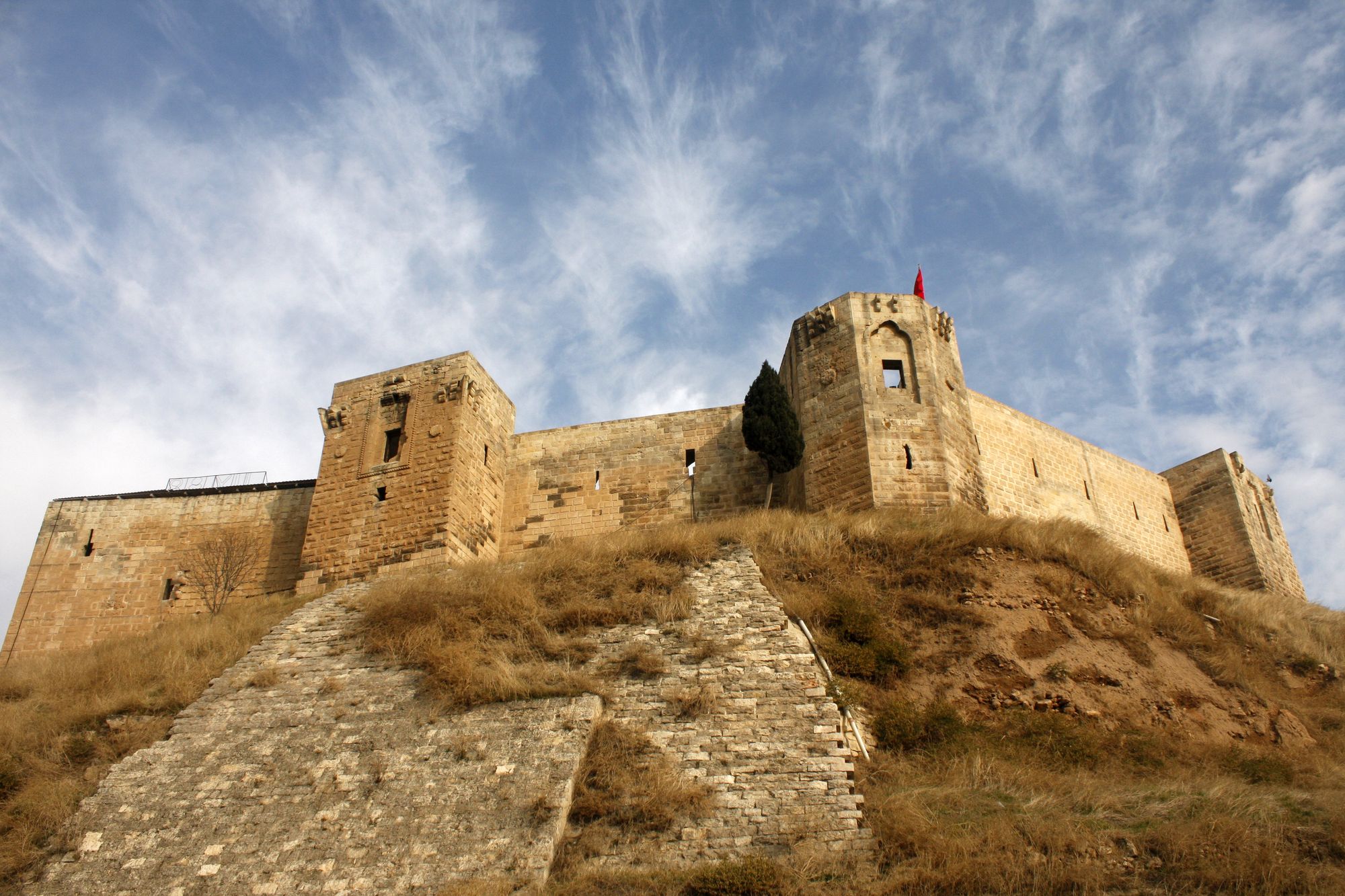
- The Rumkale Fortress is situated on a rocky peninsula at the confluence of the Euphrates and Merzimen rivers. The castle, whose history is believed to date back to antiquity, is in Roman and Mediaeval style. Inside are churches, monasteries, water cisterns and ditches.
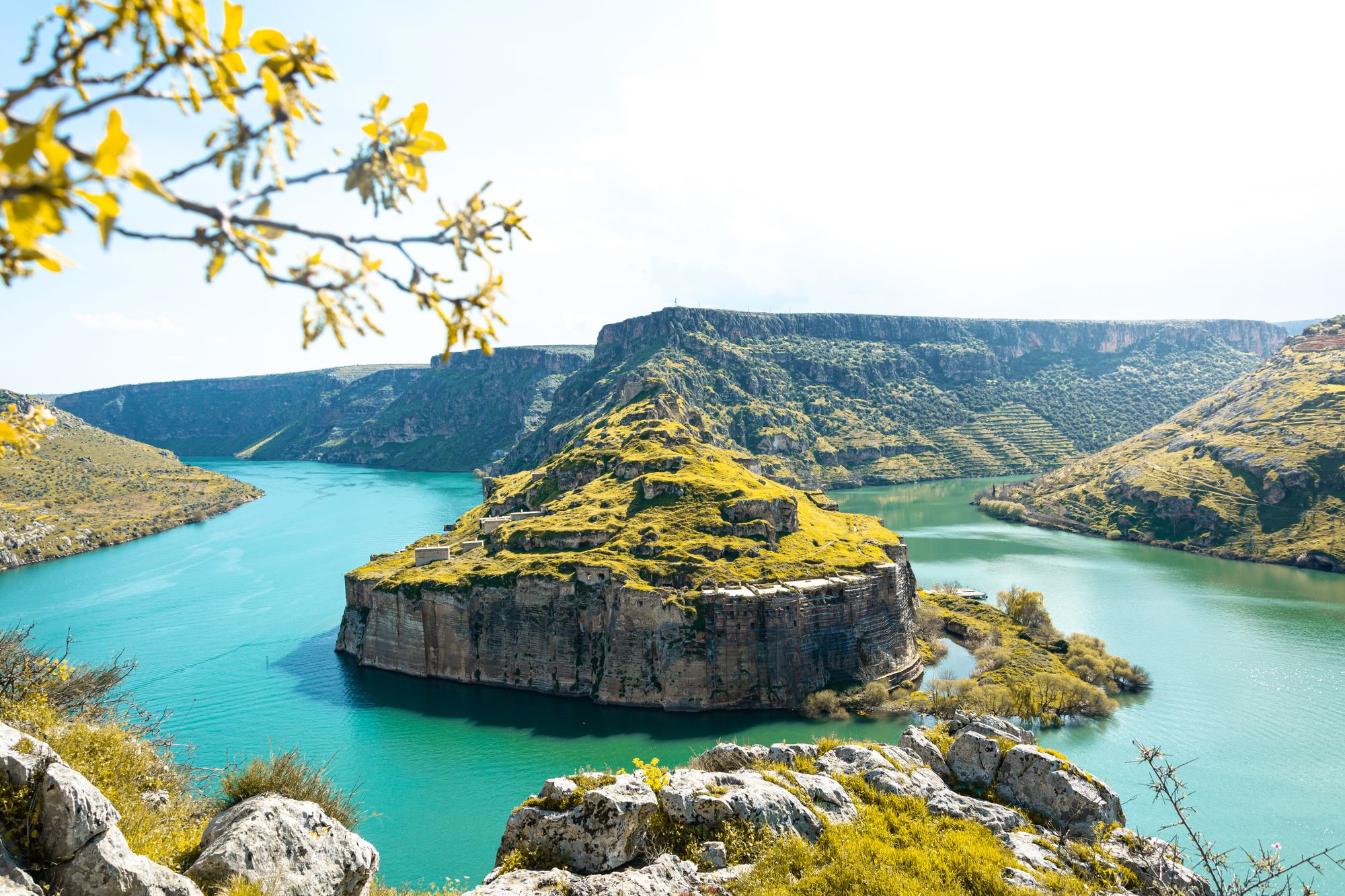
- The historic Antep Houses are ideal places to visit traditional stone mansions and explore the city's culture. Enjoy the authentic atmosphere by staying in the old mansions, some of which have been converted into boutique hotels, or by visiting some of the houses in the Bey district.
Gaziantep is home to a great number of historic mosques. Here are some prominent examples:
- Kurtulus Mosque - Originally built as St. Mary's Church, it is one of the largest mosques in Gaziantep. Formerly used as a church and prison, it has been transformed over time into a mosque with a distinctive Gothic architectural style.
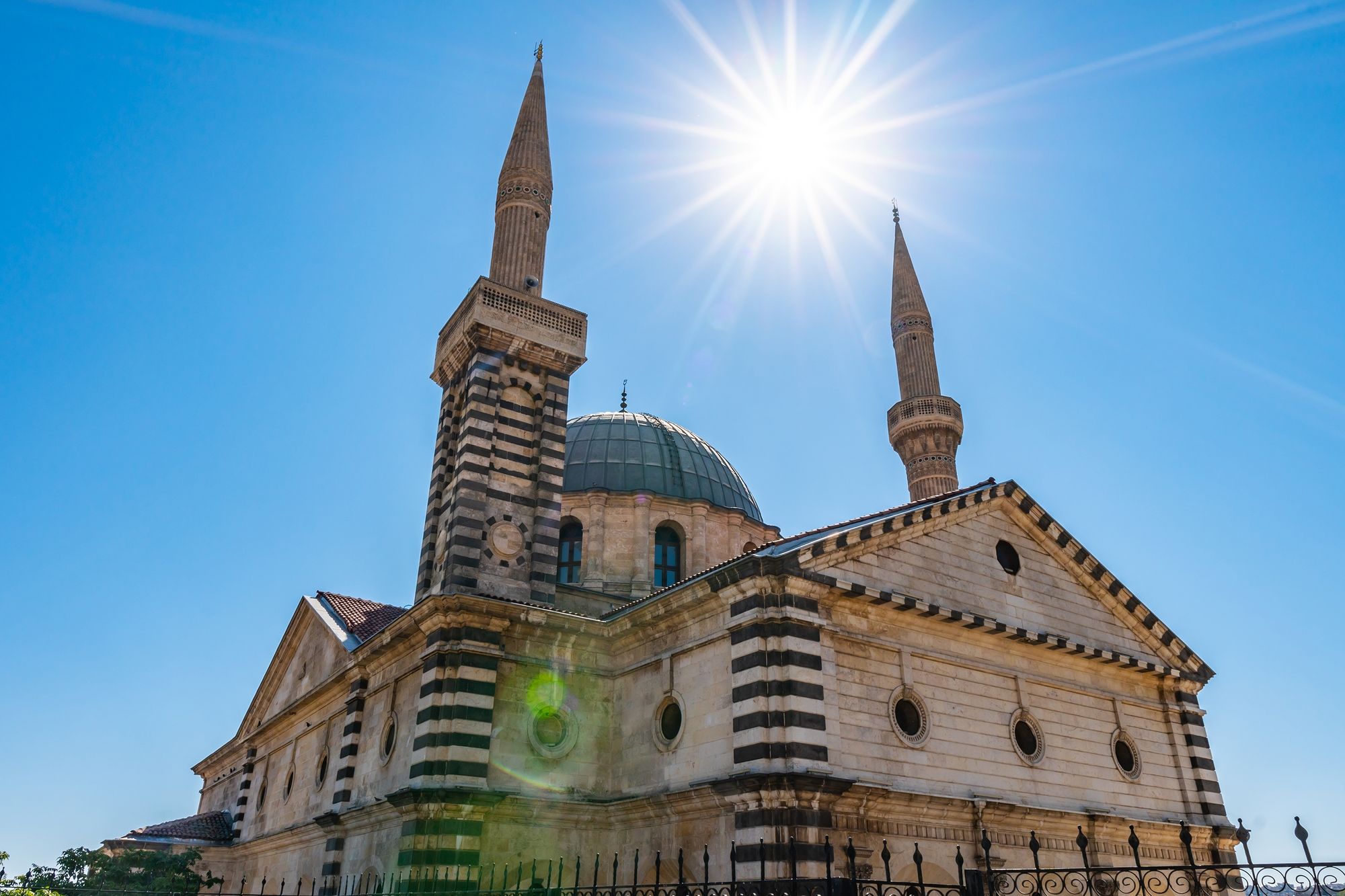
- Alauddevle Mosque - Built in the beginning of 1500s in the name of Alauddevle, the last ruler of Dulkadir Emirate. Since its architect and builder was a Christian, the architecture of the mosque has specific characteristics of Christian art.
- Boyaci Mosque - Built in 1357 by the Mamluk Sultanate, it is one of the most historic mosques of Gaziantep. It impresses visitors with a large courtyard, a minaret with an impressive model and a pulpit specially designed to save space.
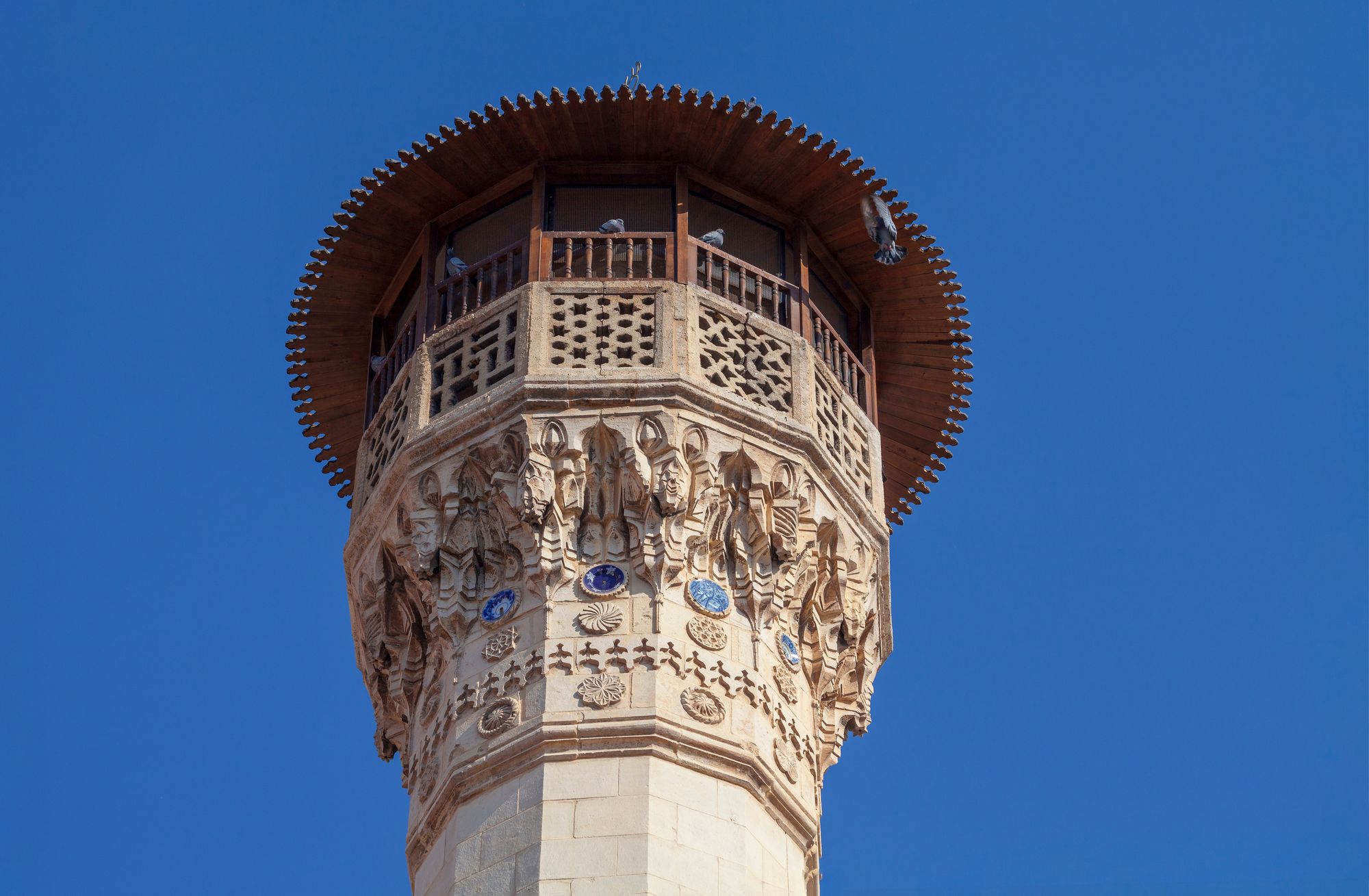
One of the first places that comes to mind when thinking about Antep is the Coppersmiths’ Bazaar. You can buy souvenirs including copper coffee pots, teapots, pots, decorative items, tea and coffee sets and many other products from artisans' shops. You will also find a great range of food such as dried peppers and eggplants, spices and tomato paste prepared locally.
Gaziantep is also an exciting place from a culinary point of view. The most popular dishes are beyran soup with lamb and stuffed meatballs, yuvalama soup with lamb and chickpeas, lebeniye soup with yoghurt and rice, different types of kebab, crunchy pistachio pancake called katmer and the famous Turkish dessert baklava.
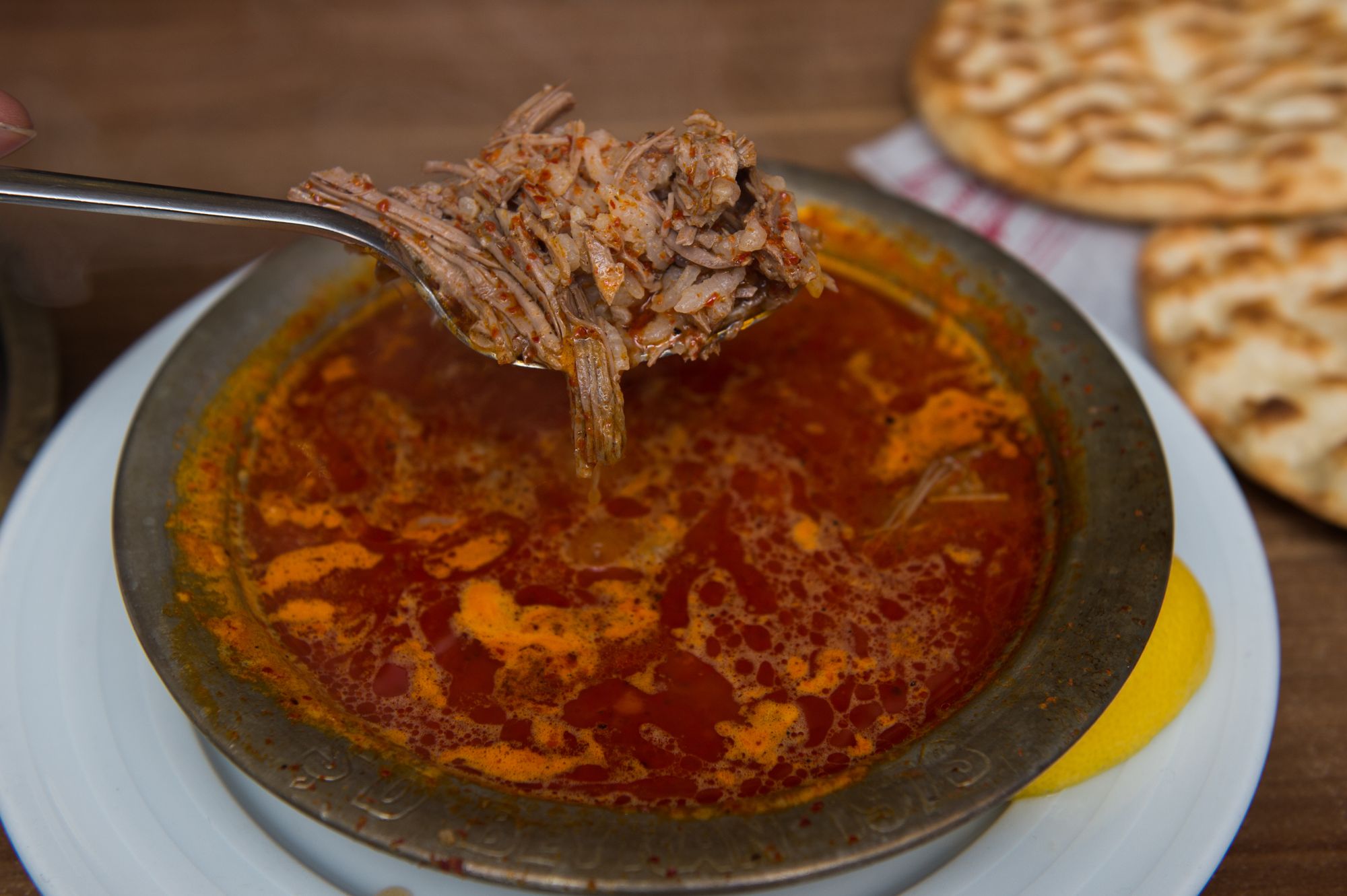
Here are some of the restaurants that are worth visiting during your stay in Gaziantep:
- Halil Usta Kebab Restaurant - Differs from other luxurious restaurants with its long years of expertise and use of special ingredients. Guests will not forget the taste of lamb tenderloin.
- Beyrancı Mustafa and Dukat Beyran - Two restaurants that are ideal for trying beyran - a local specialty made with sheep’s cheek and neck with tomato paste.
- Metanet Noshery - Offers a rich selection of dishes in Gaziantep cuisine.
- Tadım Noshery - Customers have the opportunity to try typical regional stews and delicious doner kebabs.
The most popular dessert of Gaziantep is baklava, which has an excellent reputation around the world. You will appreciate the flavour of this unforgettable dessert served at its finest in Gaziantep.
The following restaurants also sell deep-freeze baklava for those who would like to keep it in the freezer and take it out for cravings: Kocak Baklava, known for its dry baklava with pistachio; Baklavacı Zeki İnal, famous with its sobiyet with clotted cream; and Imam Cagdas, offering various alternatives such as dolma baklava with pistachio, havuc dilimi, a slice of baklava shaped like a carrot, and bulbul yuvasi - meaning “nightingale’s nest” due to its shape.
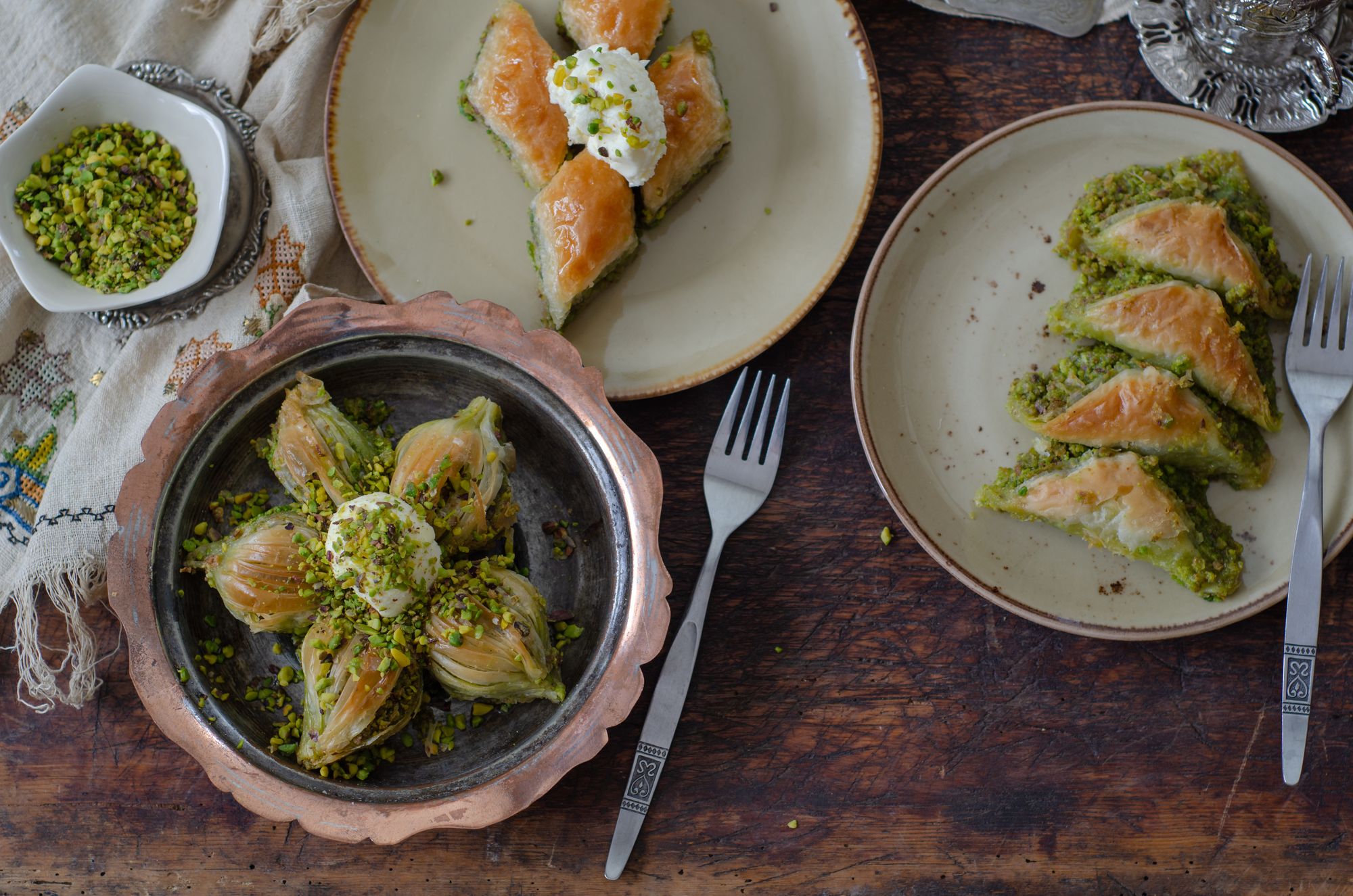
After visiting Gaziantep, head to Göbekli Tepe - the oldest settlement in recorded history. Drive 173 km on the O-52 Highway and you will reach Göbekli Tepe by following the signs.
Göbekli Tepe dates back to 11,400 BC. and is considered to be probably the oldest temple in the world, which can be explained by the reliefs of animals, people and symbols on the megaliths and the type of settlement. Due to ongoing excavations, the site is not accessible to visitors.
After visiting Göbekli Tepe, prepare to drive to Sanliurfa. After a 35-minute drive you will reach the city.
Sanliurfa
Considered to be the birthplace of Prophets Abraham and Ayyub (AS), Sanliurfa is known as the "City of Prophets" and offers many attractions for halal-conscious travellers. It is one of the most notable stops in your journey with its unique flavour typical of Southeastern Anatolia.
We recommend staying in this pretty city for a few days so you can explore its beauty to the fullest. In addition to boutique hotels converted from old mansions, you can choose city hotels that value luxury and comfort. Browse the halal-friendly hotels in Sanliurfa and choose the best one for you.
There are a large number of Islamic artefacts in Urfa, which is referred to as "the land of the Prophets" since 7 prophets visited or lived in the city. Some of these used to be the Maqams of the Prophets while others are impressive mosques and madrasas.
An iconic symbol of Urfa is Balikligol, also known as Halil-ur Rahman Complex, originally called Pool of Abraham. It has an amazing location close to historic mosques and madrasas. Built by the governor of Raqqa in 1736, Rizvaniye Madrasa and Mosque are located on the shore of this 150-metre-long lake.
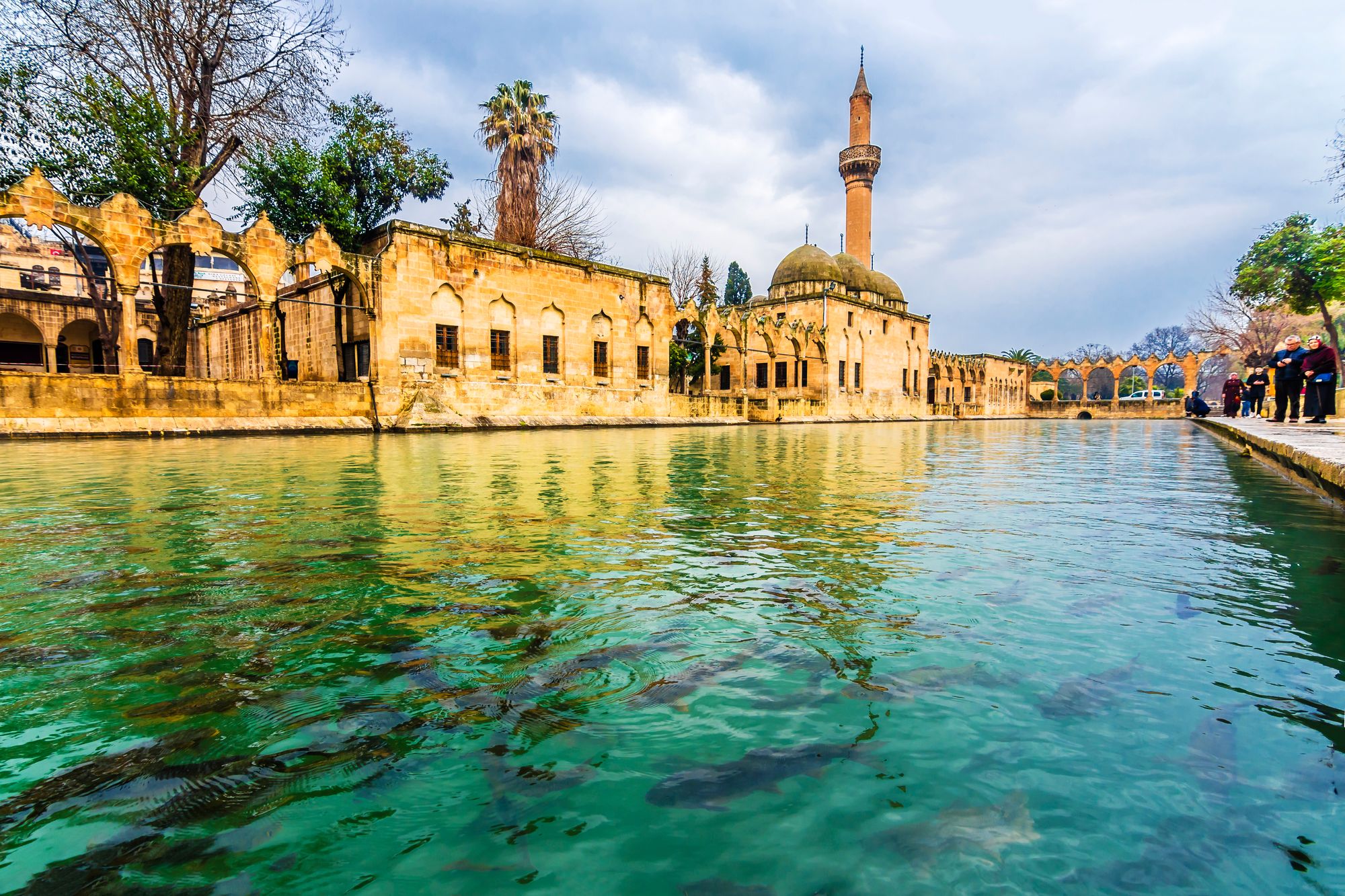
On the other side of the lake are the Halilurrahman Mosque, built as the Church of the Virgin Mary and converted into a mosque in the 18th century, the Halilurrahman Madrasa and the Maqam of Prophet Abraham.
There are 42 stunning historic mosques in different parts of the city which are definitely worth seeing and here are some of them:
- Firfirli Mosque - Also known as Twelve Apostles Church, it was converted into a mosque in 1956
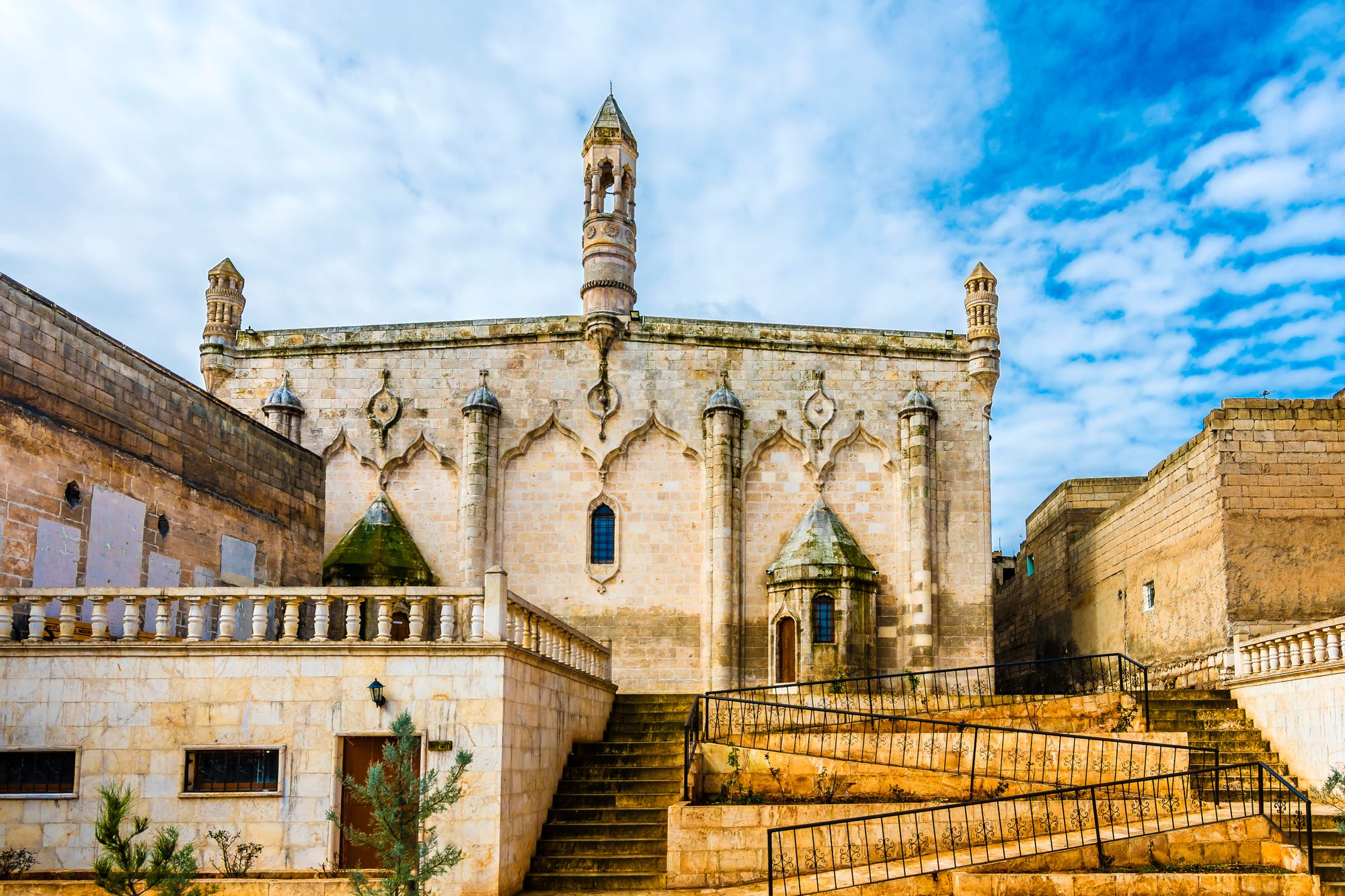
- Selahaddin Eyyubi Mosque - Converted from the Saint Johannes Prodromos Addai Church built in 457
- Yusuf Pasha Mosque - Built in 1710
- Dabakhane Mosque - Dates back to 1568 and located near Kelleici Stream, very close to historic inns
- Hasan Padishah Mosque - Built during the Aq Qoyunlu Empire
- Old Omeriye Mosque - Built during the caliphate of Umar
If you wish to learn more about the city, which is characterised by its history dating back to ancient times, there are many museums and archaeological sites in Urfa:
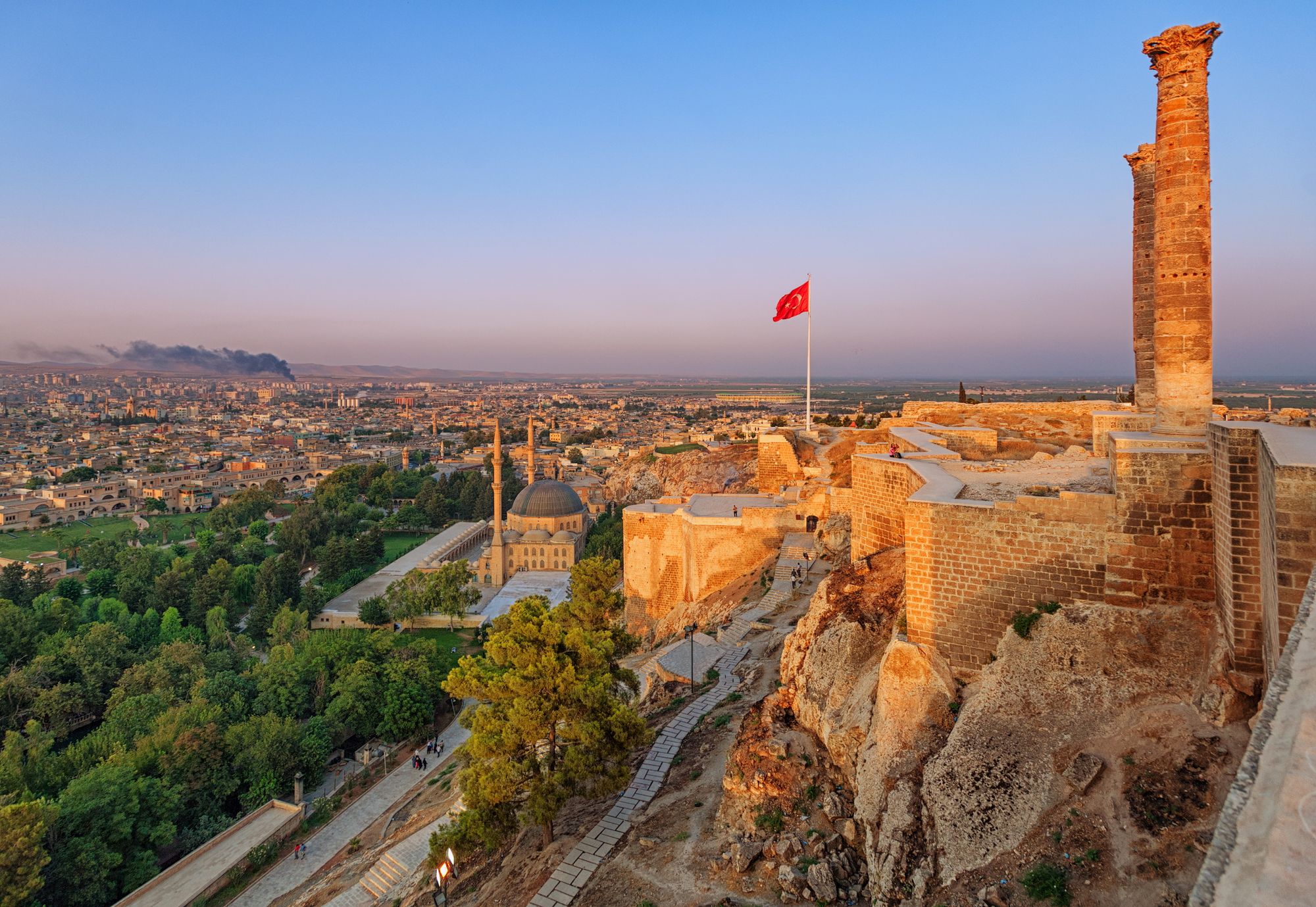
- Located on a Neolithic hilltop, Urfa Castle is believed to have been built in 9500 BC. Although the exact construction time is not known exactly, historians assume that it was built between the 6th and 11th centuries. The castle is just a 5-minute walk from the Abraham pond.
- Just a 10-minute walk from Urfa Castle, the Archaeological Museum of Sanliurfa is of international importance, displaying artefacts from the neolithic times of the region. Urfa Man, also known as the Balıklıgöl statue, the oldest human shaped statue in history, is on display in the museum. Objects found in excavations in this geographical area are also displayed.
- Haleplibahce Mosaic Museum is located in the same garden as the Archaeological Museum. It displays a large number of amazing mosaics and ancient structures including Orpheus mosaics, Ktisis mosaics, mosaics from the Villa of the Amazons and mosaics depicting scenes from the life of Achilles excavated during infrastructure works.
- Urfa Kitchen Museum is the right place to experience the wonderful cuisine and lifestyle in an old mansion in Urfa. The museum also offers courses on the city's cuisine.
- Also referred to as “Seventy Inns” in Evliya Celebi’s Book of Travels, Gumruk Inn was originally built as a caravanserai in 1563 and has been in use for many centuries. It is the oldest inn in Urfa and visitors can enjoy the tea and coffee houses in its courtyard, and watch rosary makers and tailors. Try luscious grilled liver served at the inn’s restaurants.
- Located 46 km from Sanliurfa, the vast Harran Plain is home to the ruins of the world’s first university, Harran Mound and Castle and the Harran Grand Mosque built in 744.
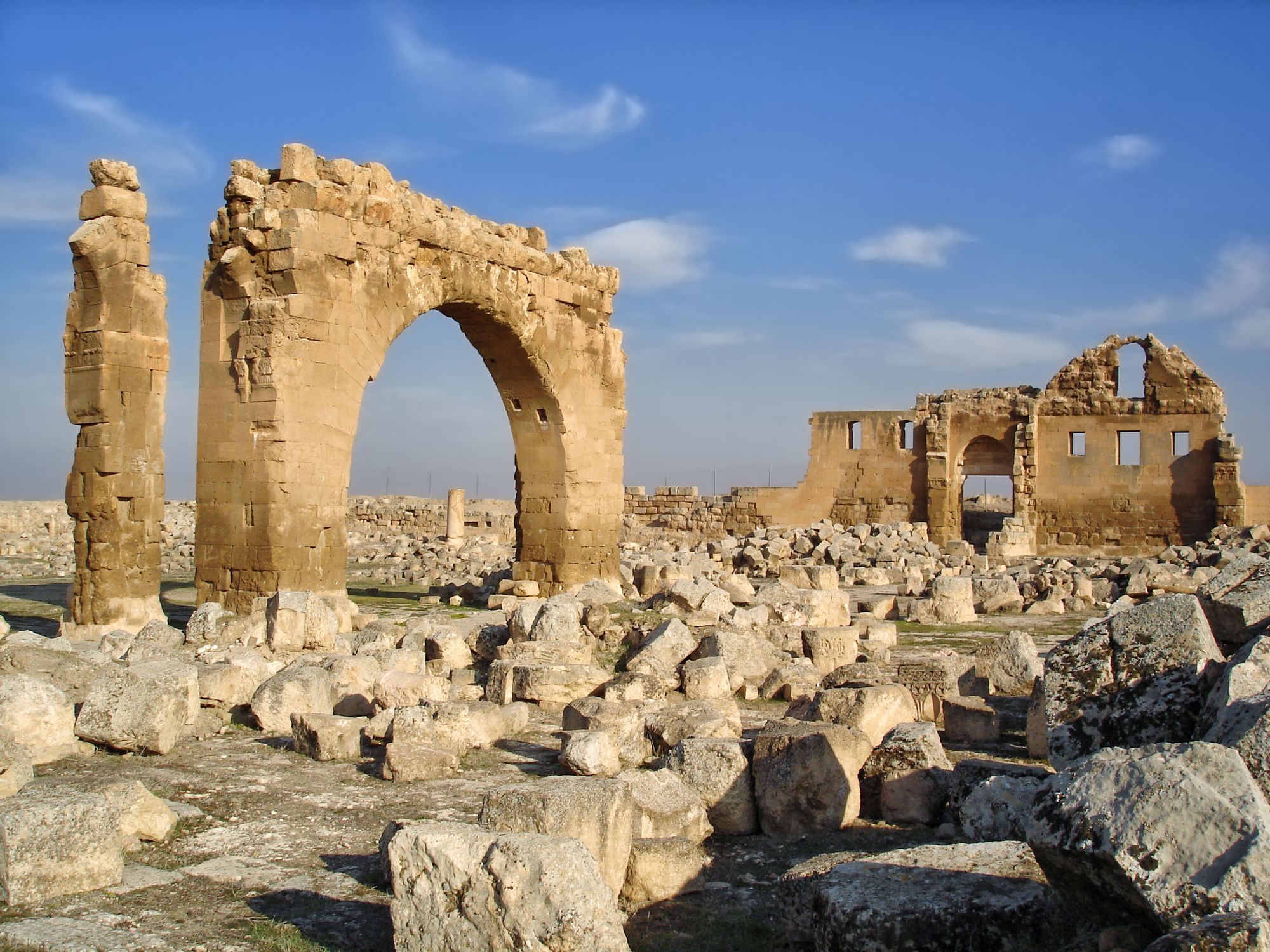
- Located on the bank of the Euphrates River (which separates Sanliurfa and Gaziantep) in Urfa, Halfeti is an ancient village that was flooded after the Birecik Dam overflowed. Across the river in Antep is Rumkale, and the region's symbol is the endemic black roses.
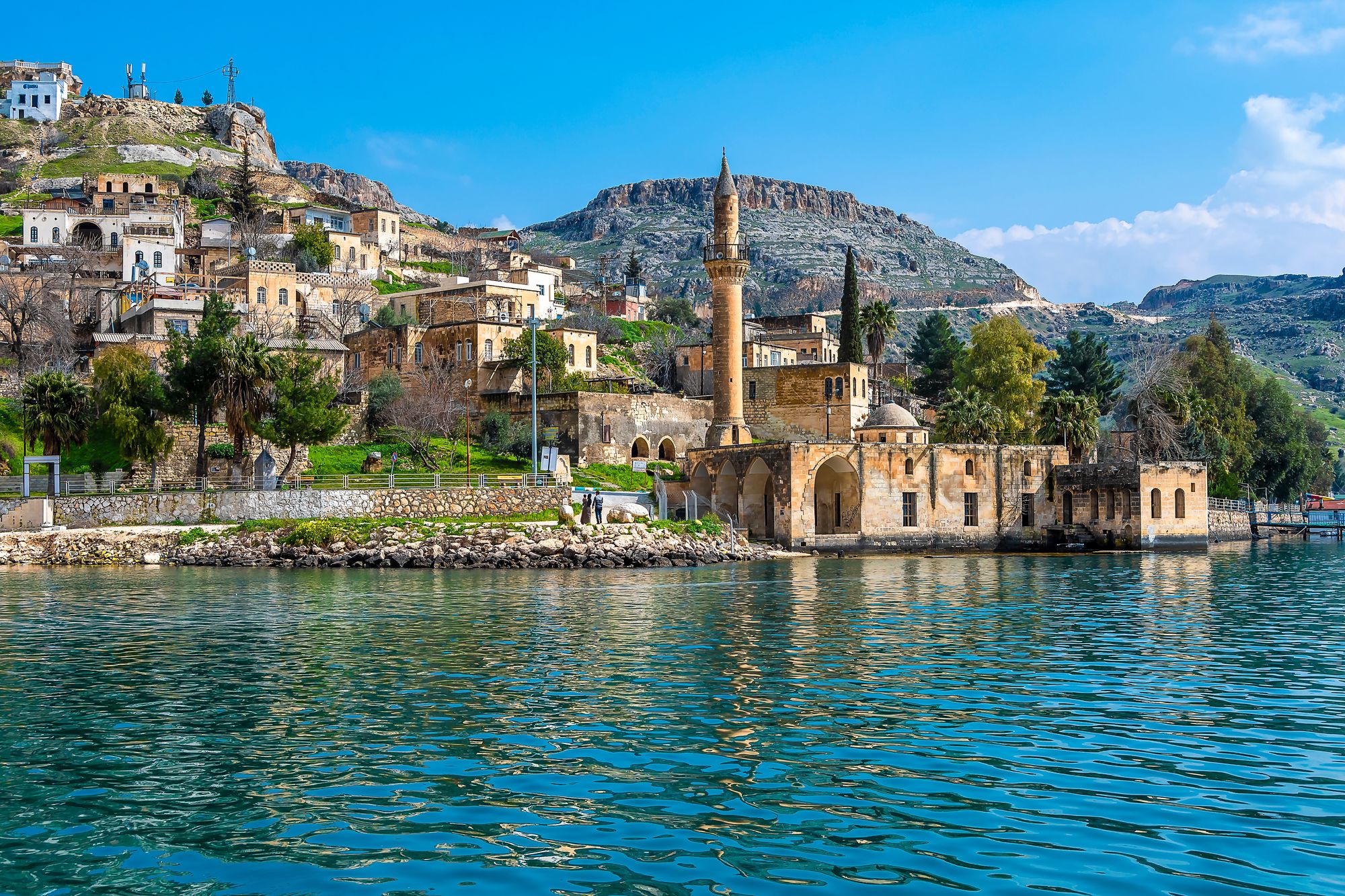
The cuisine of Sanliurfa is also characterized by its great flavors. There are many alcohol-free restaurants in the city where you can taste dishes prepared according to ancient recipes dating back centuries.
Converted from an old caravanserai in Urfa, a famous Silk Road station, the Jawahir Inn offers an excellent opportunity to taste the local flavours. Tasty dishes include agzi yumuk, meat-filled dumplings; stuffed aubergines and peppers, served sour; Urfa-style borani cooked with chard and lamb; Isot Comlegi, a great mix of diced meat and peppers; and onion kebab. There are also delicious desserts like Shillik and Hirtlevik, both walnut pastries dipped in sweet syrup. We also recommend attending special night events associated with the city called ‘Sira Nights’.
Converted from an old Urfa mansion, Museopotamia Restaurant is another great place to taste traditional delicacies. ‘Sira Night’ events are organised every Friday and Saturday. If you happen to attend such an event when you are in Urfa, try mirra - a special type of coffee traditionally served during those events.
If you choose to visit more restaurants to enjoy the local tastes of Urfa, try the Gulbaba Restaurant and eat eggplant kebab, prepared with locally grown eggplants in Birecik; the Durak Kebab Restaurant, a small restaurant often favoured by local people for eating traditional Urfa kebab, prepared with mincing knives instead of machines; or try the Culcuoglu Baklava & Restaurant, which offers a variety of baklavas and kebabs.
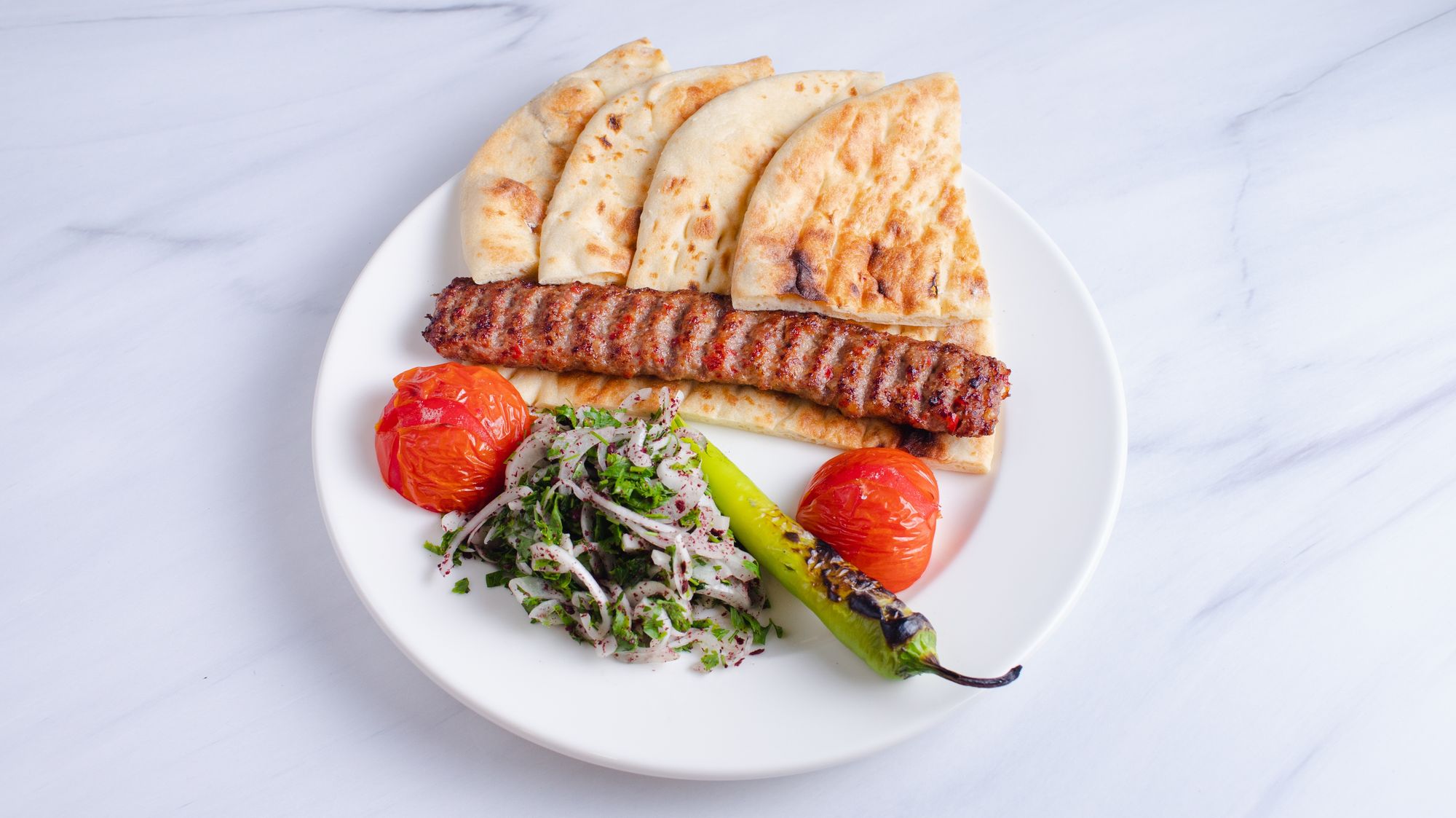
Get ready to leave Sanliurfa and drive to Viransehir - an enchanting place of Islamic heritage. Drive 50 km west on the E90 and you will reach this pretty town. There you can pause to visit the tombs of the family members of several prophets who are believed to have visited the city. Continue on the Viransehir-Diyarbakir Highway and after 106 km you will reach Diyarbakir.
Diyarbakir
Known as the “Paris of the Eastern Anatolia”, Diyarbakir is a splendid city with historic buildings, cultural houses and traditional dishes on the one hand and modern and luxurious structures on the other. Besides its memorable mosques, inns and mansions, there are many cafes and restaurants in the neighbourhood named Road 75 on Mahabad Boulevard.
Like southeastern Anatolia, Diyarbakir is home to a large number of Islamic heritage sites and historically important buildings. You will find many impressive buildings ranging from mosques to inns.
- The oldest mosque in Anatolia, Diyarbakir Grand Mosque was converted from an Assyrian church in 639 during the reign of caliph Umar.
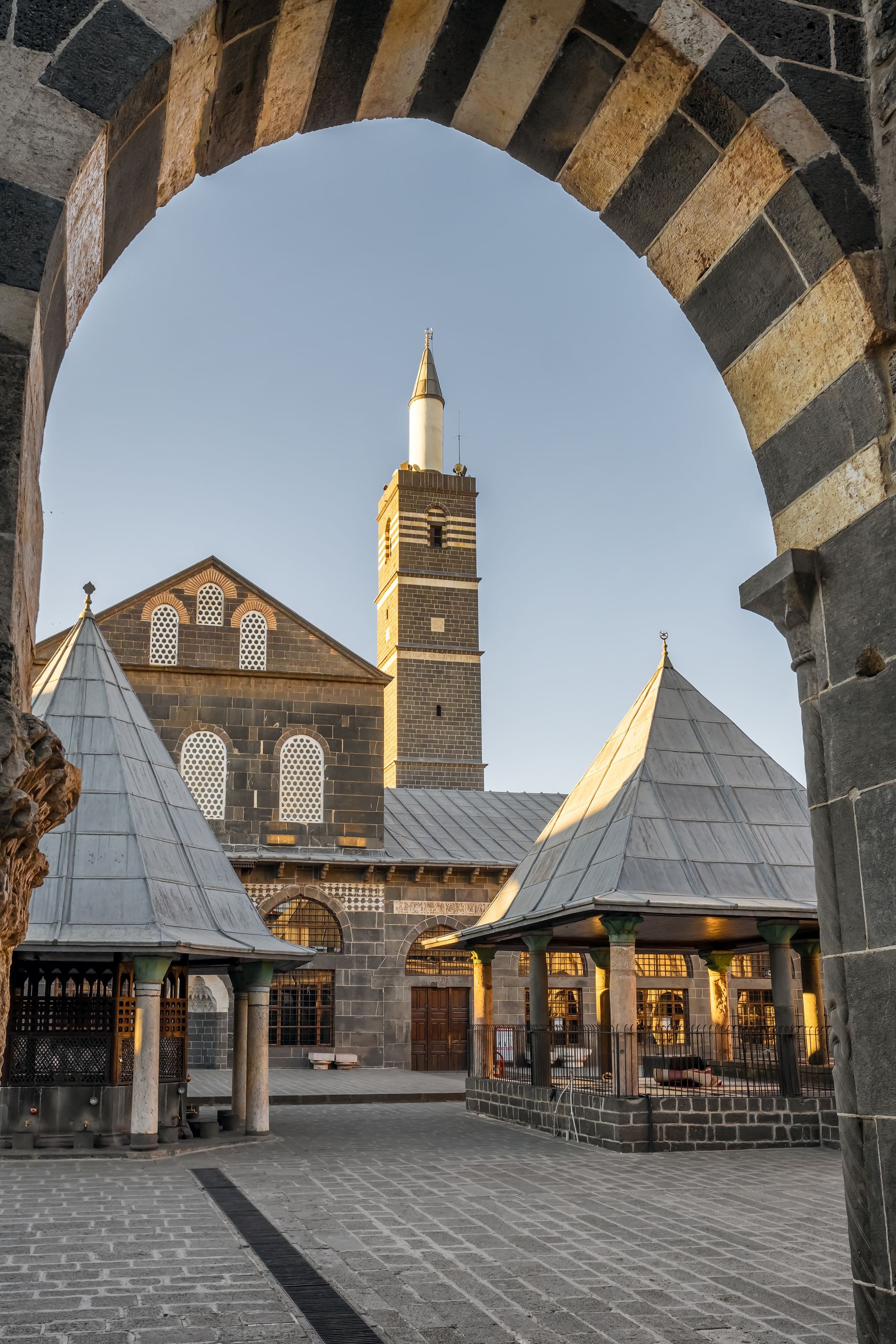
- The Hasan Pasha Inn was built in 1573 by the Ottoman Governor of the period. Nowadays, in restaurants and tea gardens, customers are served in the inner courtyard.
- Dating back to the 17th century, the Suluklu Inn takes its name from the medicinal leeches found in its courtyard well.
- The Sheikh Matar Mosque and its four-pillared minaret were built in the Aq Qoyunlu period. The mosque is known for its ornate details and minaret, which stands on four pillars that form the walls of the structure. Mosques of this style do not exist elsewhere in Anatolia and the four pillars are generally associated with four sects.
- Although the time of its construction is not known, it is believed that Diyarbakir Castle, namely its citadel, was the first settlement of the city. In addition, the walls of Diyarbakir are the second longest in the world after the Great Wall of China with a length of 5.5 km and can be seen from space.
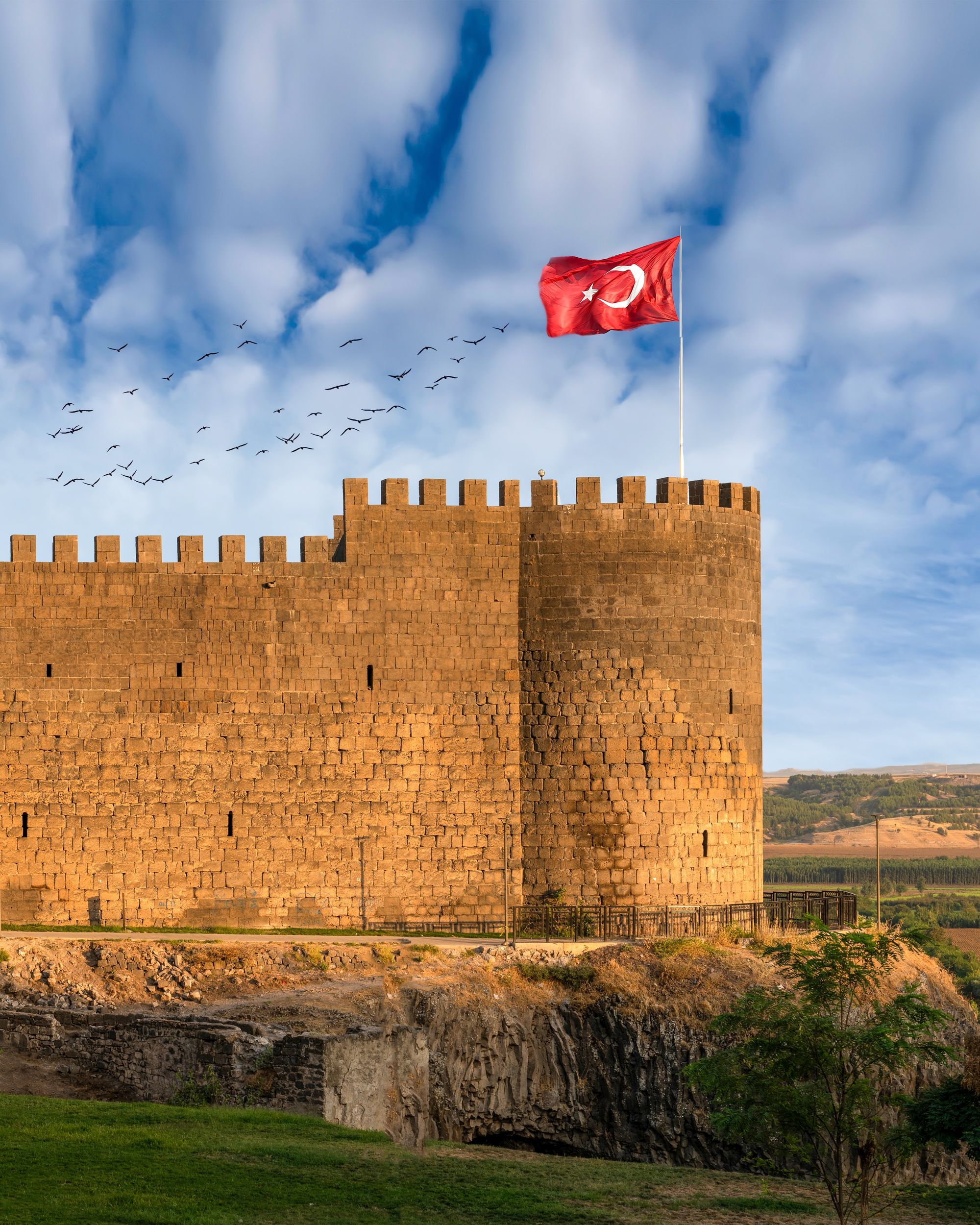
- The Ten-Eyed Bridge, also known as the Tigris Bridge, crosses the Tigris on the way to Silvan. This thousand-year-old bridge, 127 metres long, is one of the iconic spots in the city's skyline.
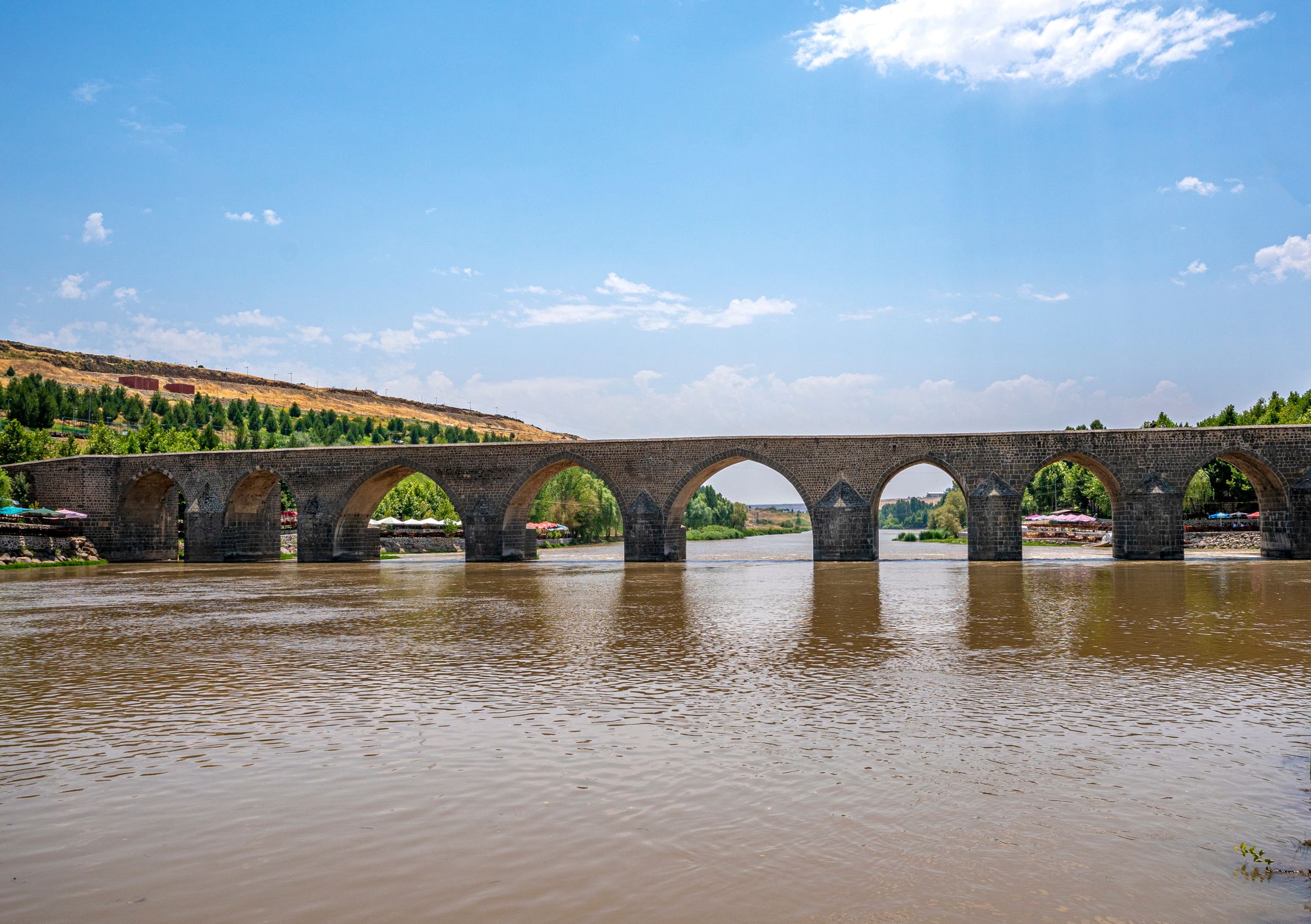
A large number of historic mansions in Diyarbakir are currently used as museums and cultural houses. The following converted versions of older mansions offer you a chance to explore the city's architectural gems and discover what Diyarbakir has to offer to the fullest: Diyarbakir Culture House, also known as Surici Villa; Ahmet Arif Museum and House of Culture, striking with its 120-year history; Alexandre Pasha's 500-year-old mansion set amidst a lush garden; 19th-century Cemil Pasha Mansion, where you can discover the city's history and culture and Cahit Sitki Taranci Cultural Museum, housed in an 18th-century building.
Diyarbakır will be one of the unforgettable stops on your gastronomic route with its flavours lingering on the tongue, where you can taste different flavours of Mesopotamia in alcohol-free restaurants, ranging from nosheries to luxurious restaurants.
Firin-ci Restaurant, serving its customers in the restored historical Vahap Bath in Sur district, is one of the generous alcohol-free restaurants where you can taste roast beef with quince, beef shank and a variety of kebabs.
Among the restaurants where you can enjoy the city’s delicious cuisine are the Dogan Sofra Salonu, located in Baglar district close to Sanliurfa Boulevard; the Hadji Halid Kebab House, one of the long-established eateries in Diyarbakir where you can taste local dishes such as meftune and the Tavaci Recep, a restaurant chain found in various cities of Türkiye.
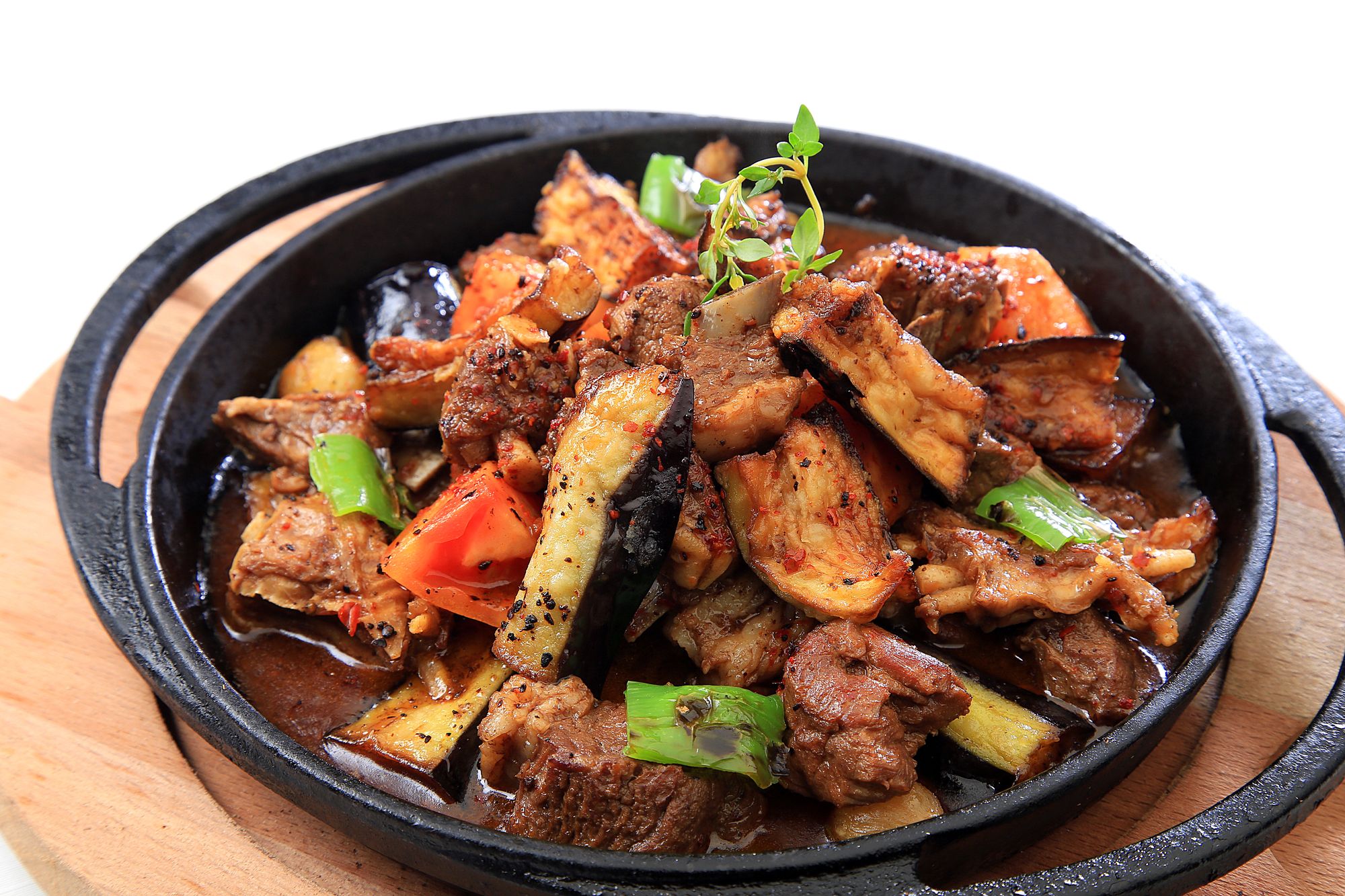
If you are going on your road trip in September, be sure to visit the Diyarbakir Watermelon and Art Festival.
Say goodbye to Diyarbakir and prepare to leave for Mardin. Drive on D370 Diyarbakir-Batman highway towards D955 Batman-Mardin highway. After 130 km, make sure to stop in Hasankeyf - an exceptionally worth seeing stopover before you set off for Mardin.
Hasankeyf
The 12,000 year old Hasankeyf was home to civilizations including the Byzantines, Sassanids, Artuqids, Umayyads, Abbasids, Hamdanids, Marwanids, Ayyubids and the Ottoman Empire. The caves are still used by local residents as a settlement and you can retrace thousands of years of history by visiting the ancient structures.
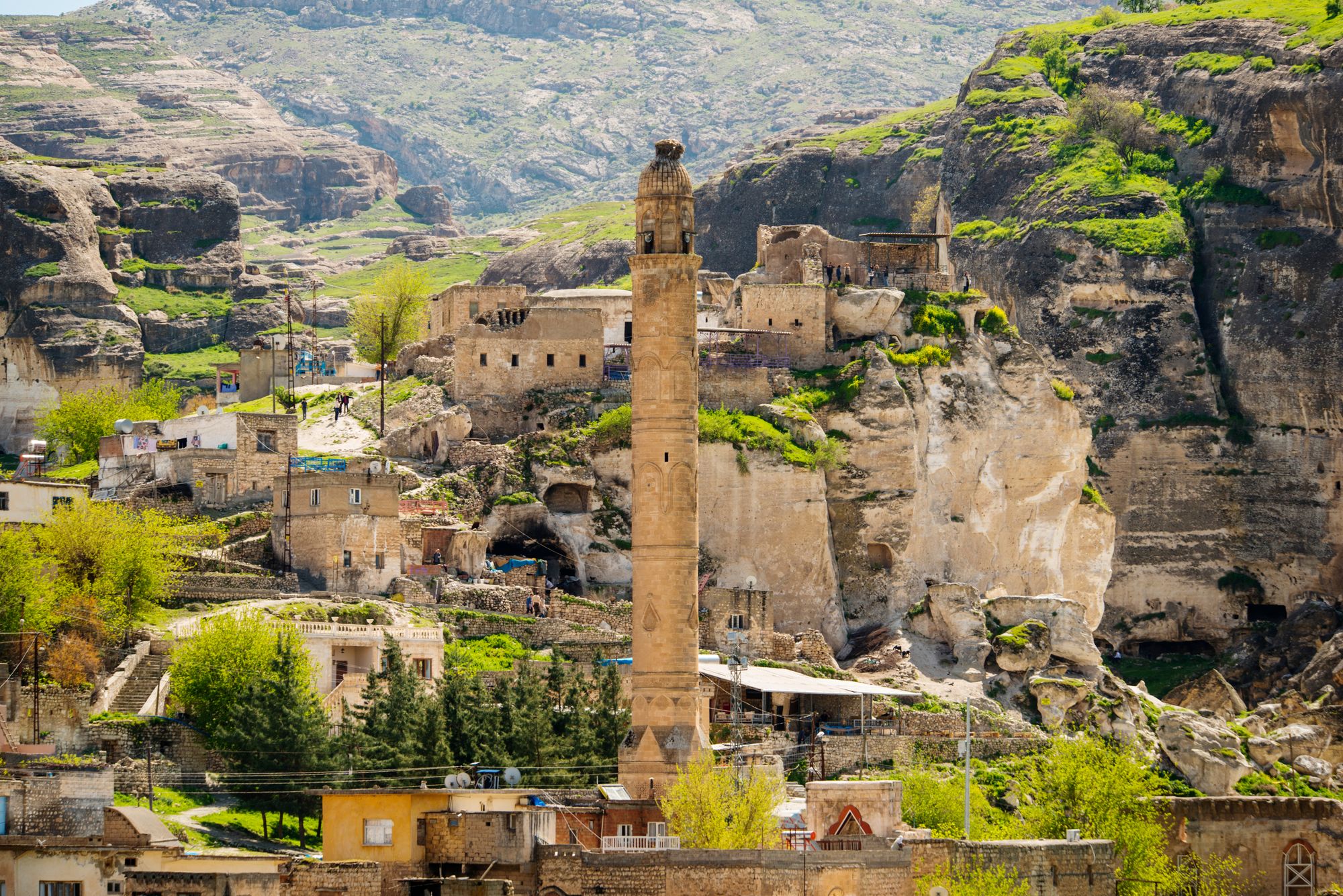
Some of these notable works are the Grand Mosque, the Grand Palace and the Small Palace, the El Rızk Mosque, the Sultan Suleiman Mosque and the Koc Mosque built by the Ayyubids and the stone bridge left by the Assyrians.
To reach the Midyat district of Mardin, head south on the Batman-Mardin Highway for 43 km.
Mardin
Midyat
Midyat has been home to a wide variety of civilizations such as Sumerians, Akkadians, Mitannis, Hittites, Assyrians, Scythians, Babylonians, Persians, Romans, Byzantines, Arabs, Seljuks, Artuqids and Ottomans throughout its history and is an important meeting place. Many movies and TV series have been filmed in the neighbourhood's mansions, making it popular with local and international tourists.
Midyat Guesthouse attracts many visitors with its Midyat-specific architecture as well as its stone carvings. It is also a place where the TV series Sila ve Hercai was filmed, making it popular with its fans.
Decorated with floral motifs and built in 1915 with the use of special Midyat stones, the Cevat Pasha Mosque is the most beautiful historic building of the district. Deyrulumur, also known as Mor Gabriel Monastery, was built in 397 when the Assyrians made up the vast majority of the population and is the oldest Assyrian Orthodox monastery in the world. It is one of those must-see places due to its rich history and wonderful architecture.
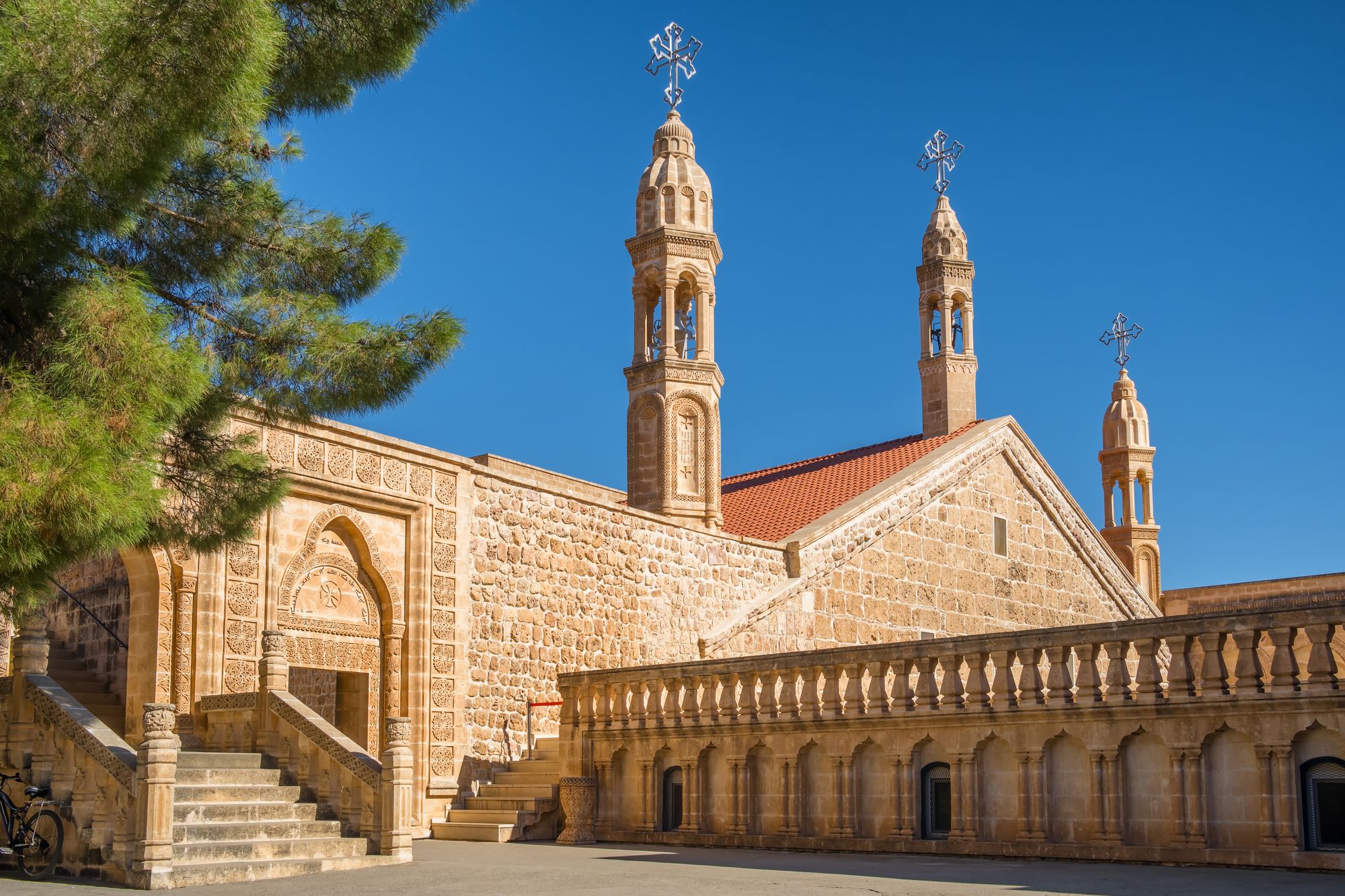
Due to its rocky land, the oldest settlements of Midyat and Mardin were caves. Visiting them allows you to see the physical conditions of the area and experience the atmosphere of ancient settlements. The most popular caves are Linveyri Shifa Cave, Gizzelin Cave (also called İplik Cave), Gumushyuva Cave and Avrihan Cave.
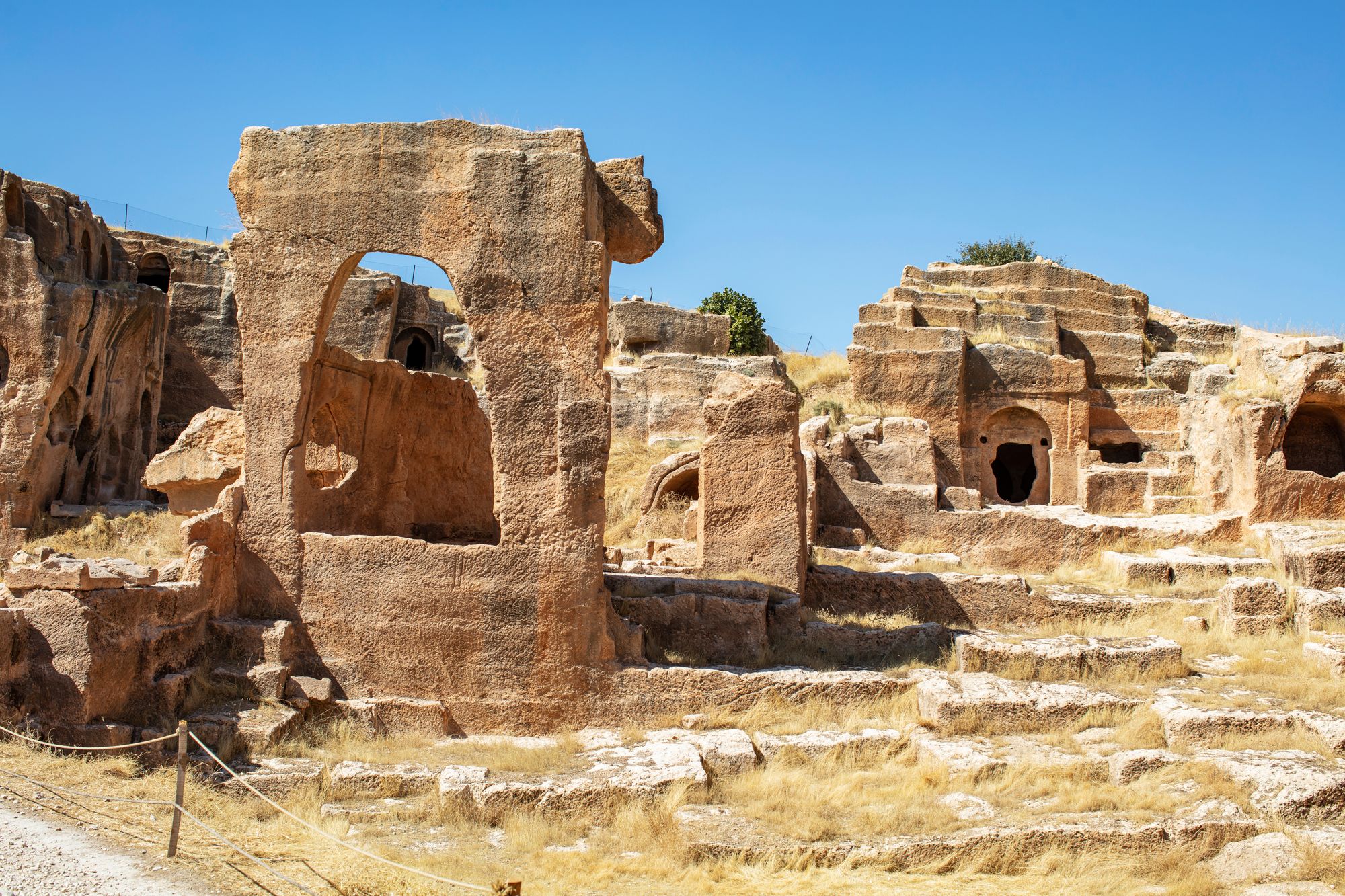
Leaving behind the mesmerising ambiance of Midyat, set off to spend the night in Mardin and complete your culinary journey. Follow the D380 motorway and after a 63 km drive (about 1 hour) you will reach the city centre.
Mardin City Centre
For the final stop of your journey, start your day at Mardin Galatist Cafe near the Mardin Museum with an amazing breakfast while enjoying the panoramic view of the city. After breakfast, visit the Mardin Museum to trace the region’s history dating back to the Bronze Age. Your trip would not be complete without seeing the Mardin Assyrian Catholic Patriarchate, located in the same area as the museum.
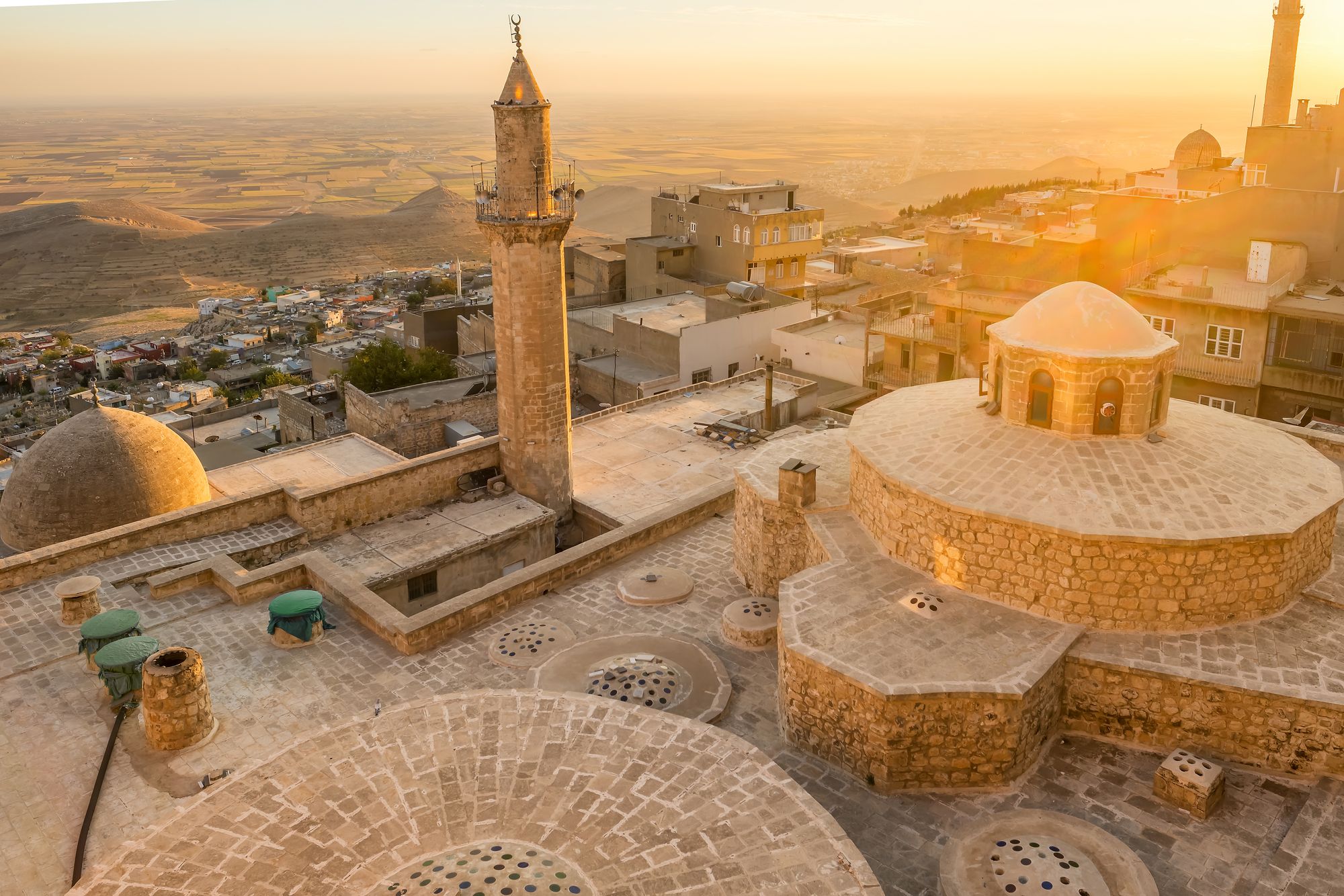
The Zinciriye Madrasa built in 1385 by the Artuqid Emperor; the Kasimiye Madrasa, built in 1457; the Shehidiye Mosque and Madrasa built in 1214 includes an iwan; and the Latifiye Mosque (also called Abdullatif Mosque), enchanting with its architecture and ornate motifs, are must-see places on your journey rich in Islamic heritage.
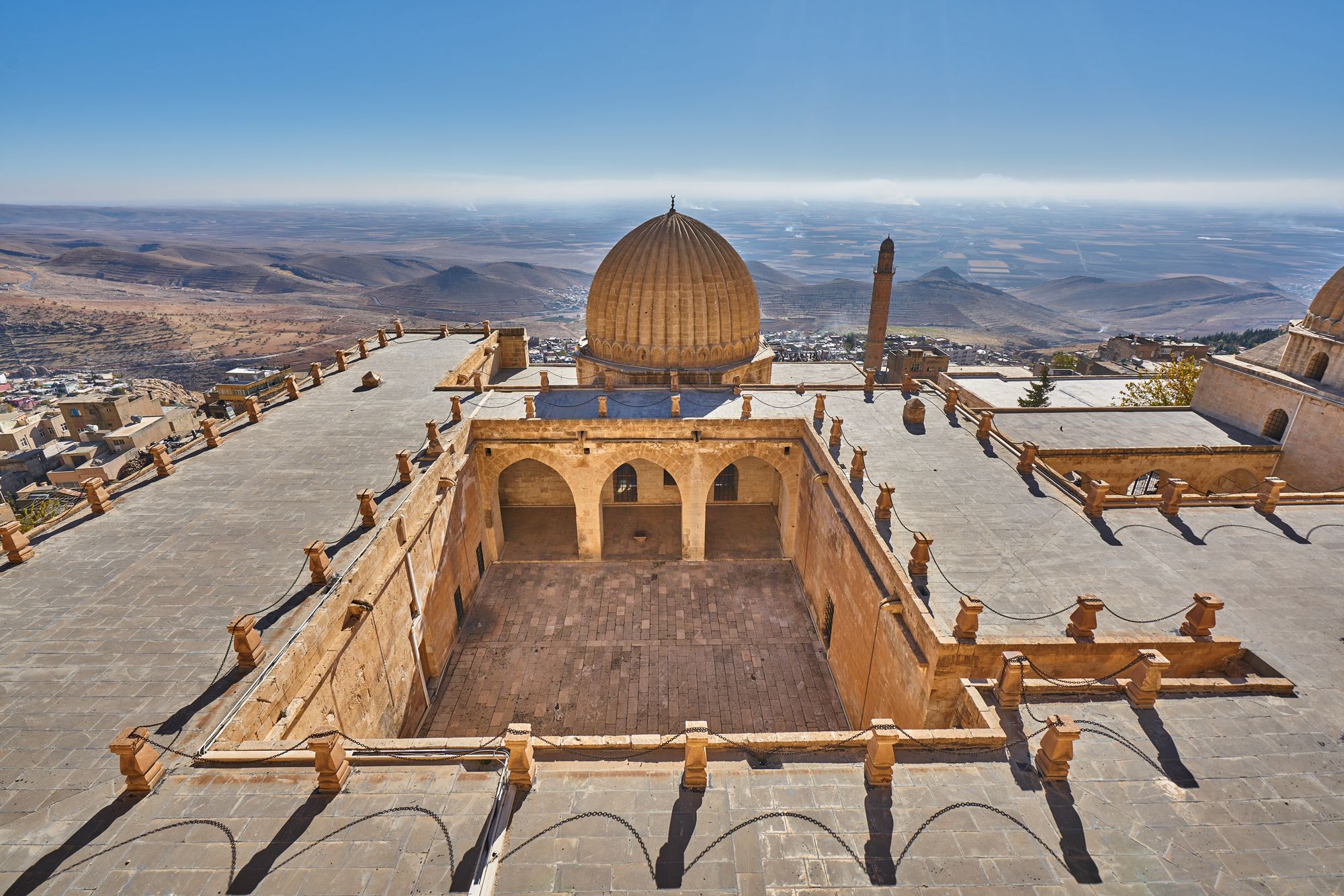
Reaching the end of your gastronomic journey, dine at the Seyr-i Merdin restaurant to enjoy the city view and taste the specialties such as Kıdre, with lamb and its bone; irok and ikbebet, Mardin-style stuffed meatballs; Sembusek, thinly rolled dough and pickling meat; hashu, rice in Mardin style. At the end of your dinner, try Dibek coffee - Mardin's specialty coffee.
Drive 20 km on the D950 highway and you will reach Mardin Airport. You can drop off your rental car at the airport or at the car rental office in the city centre.
